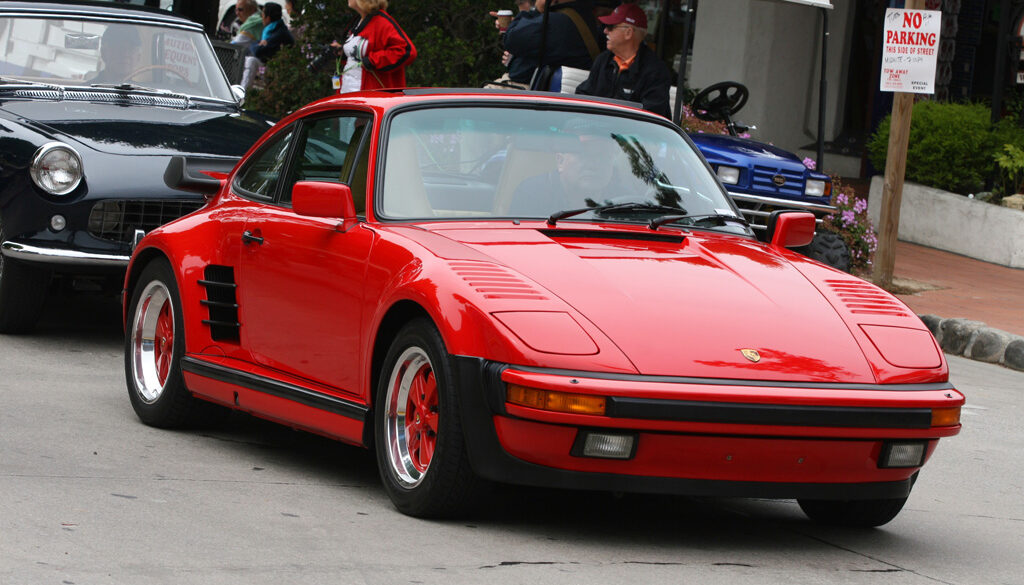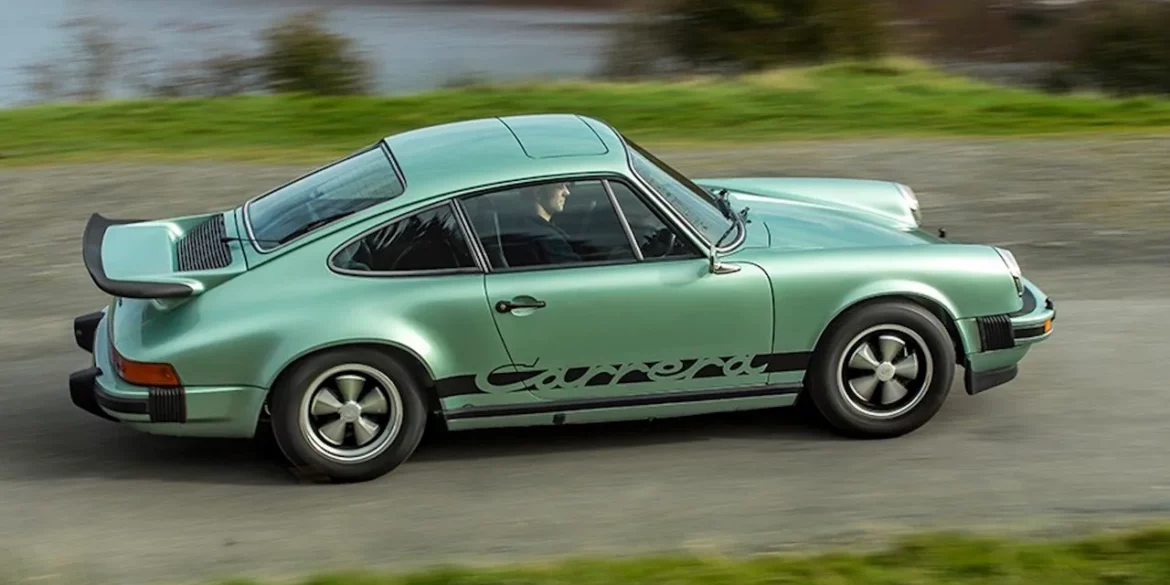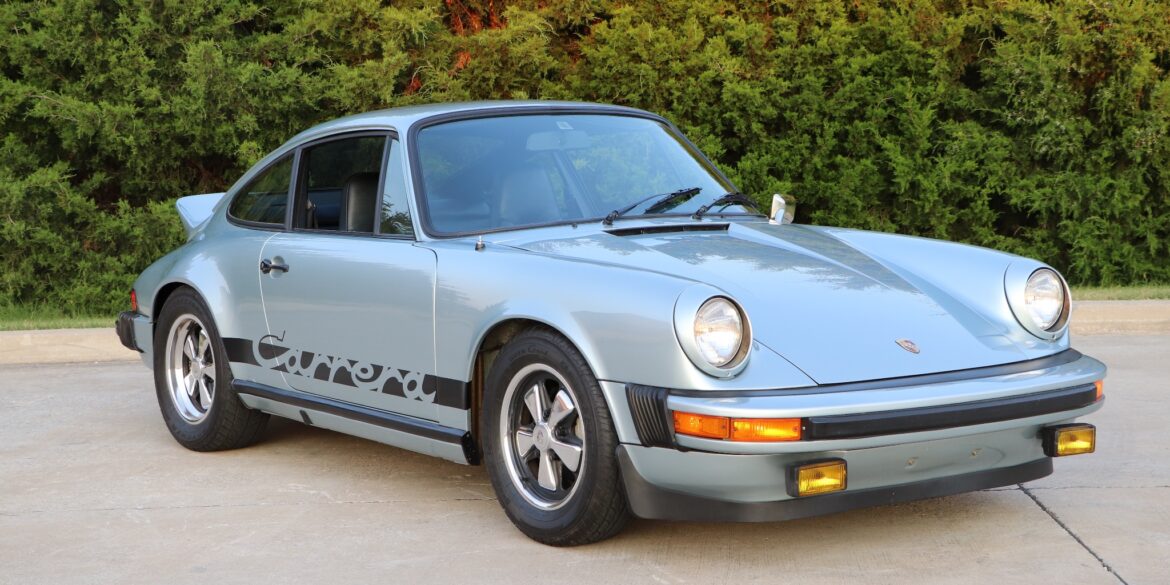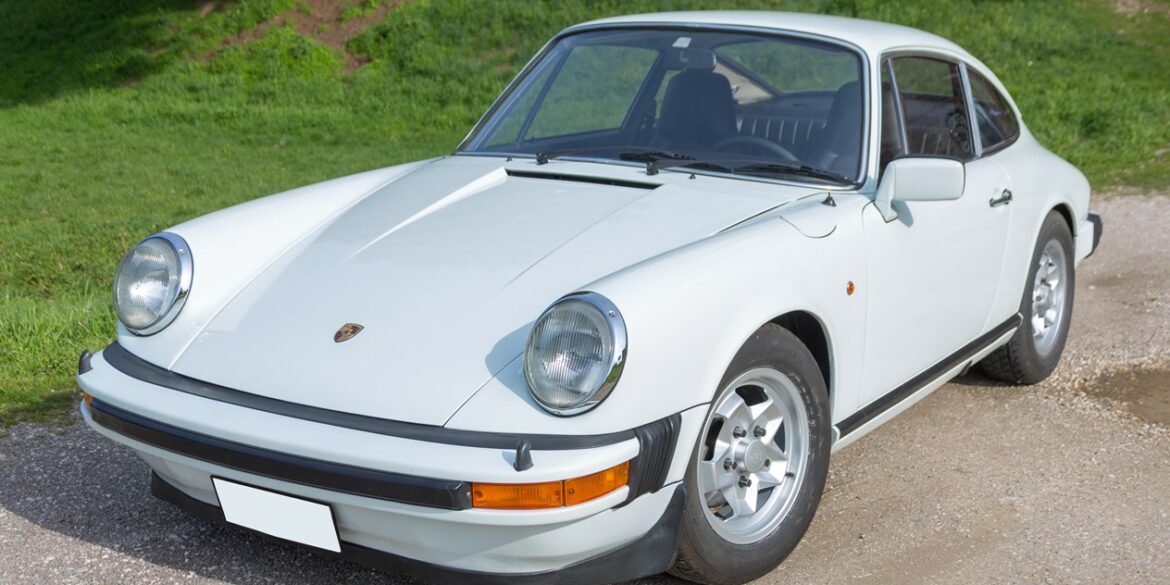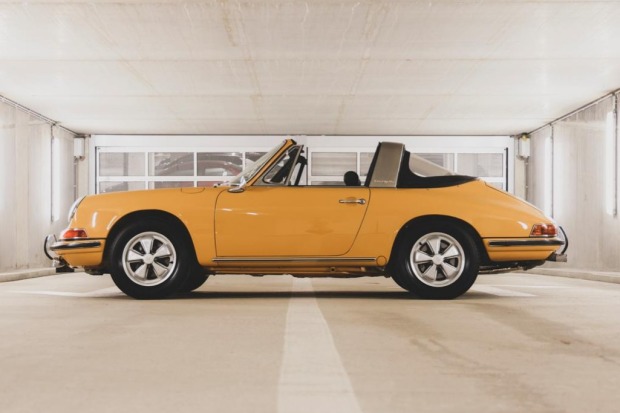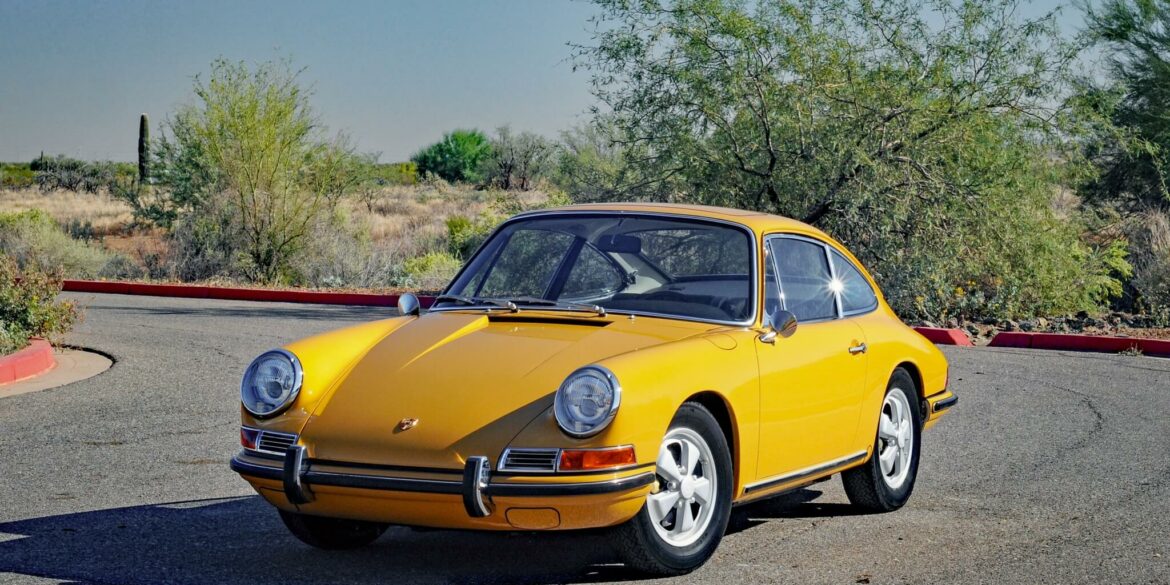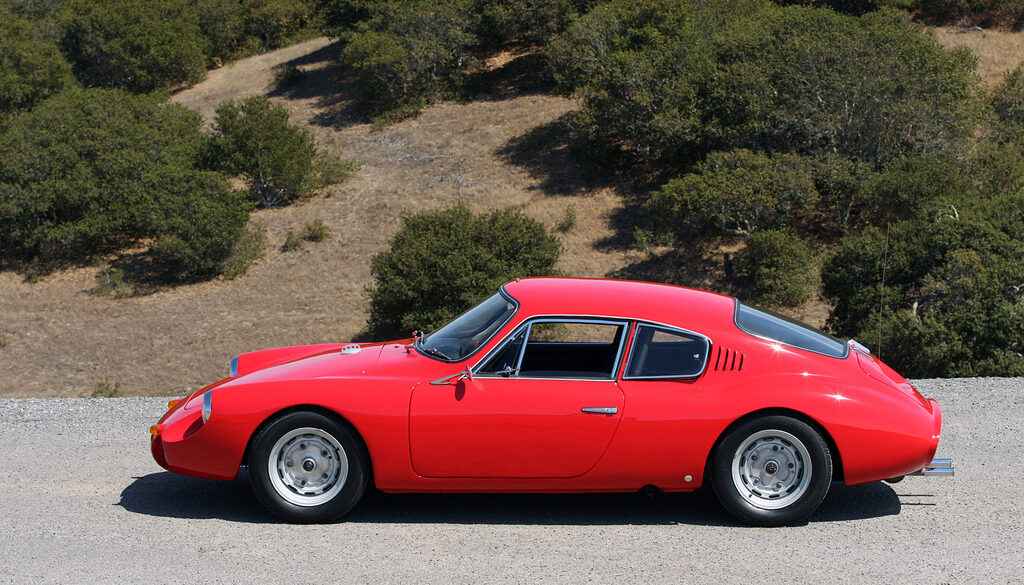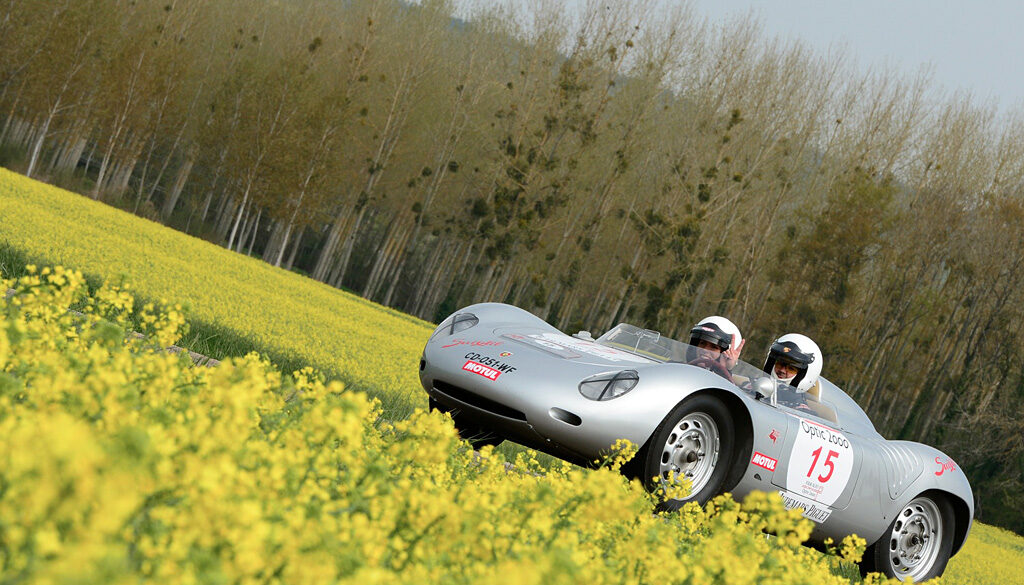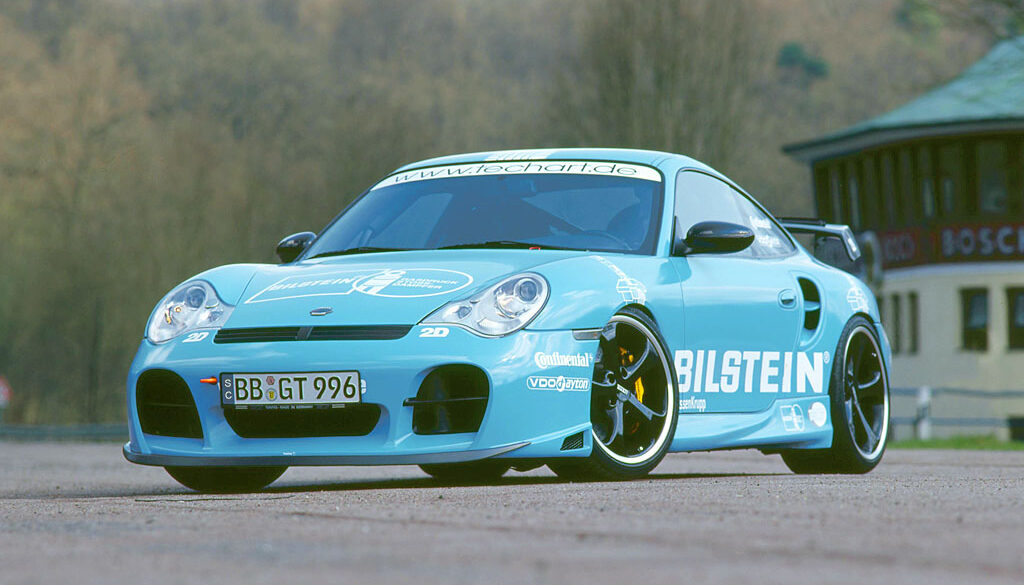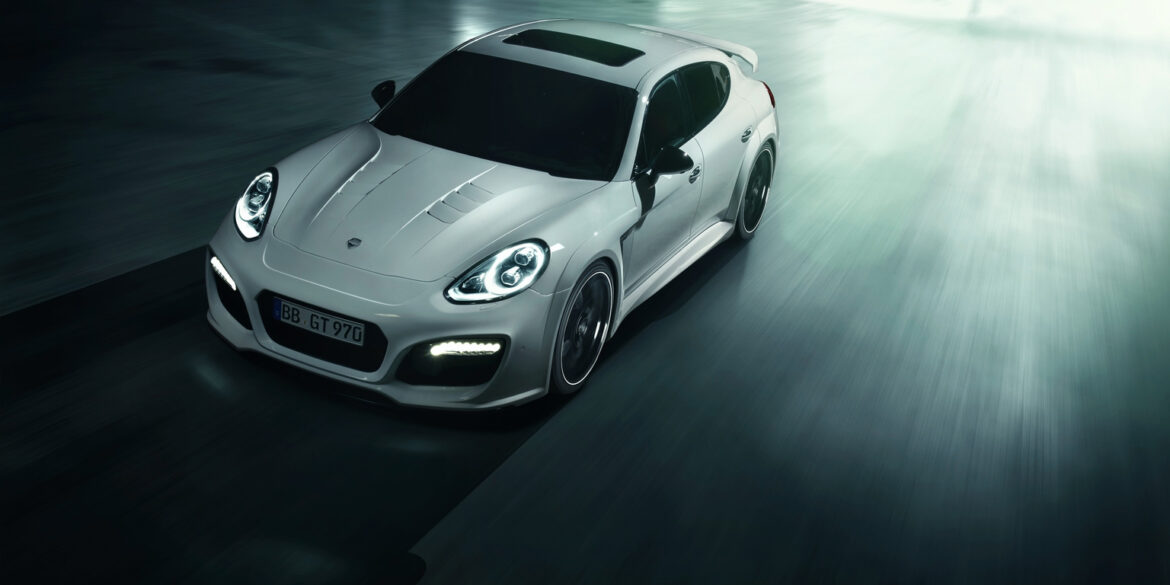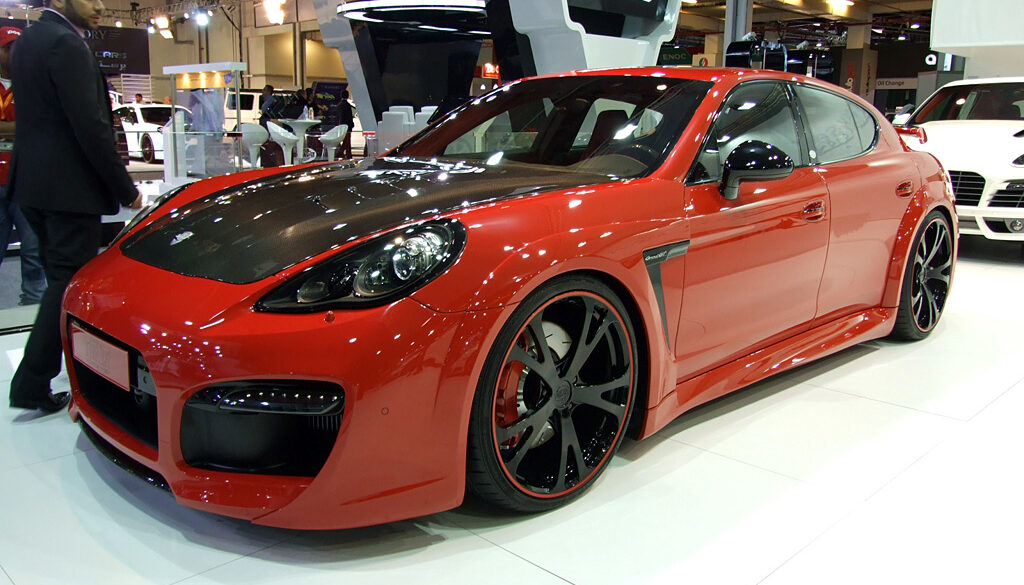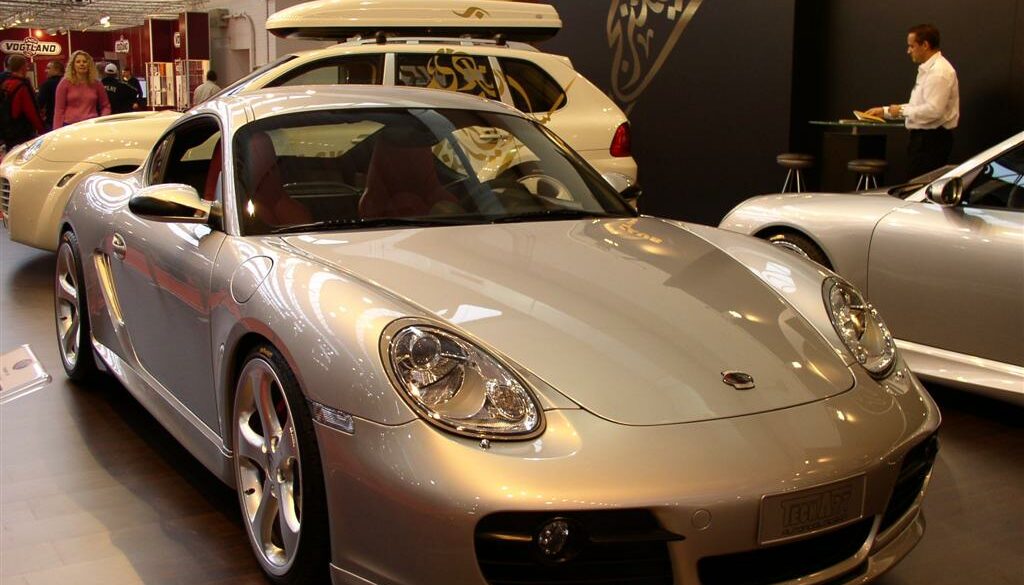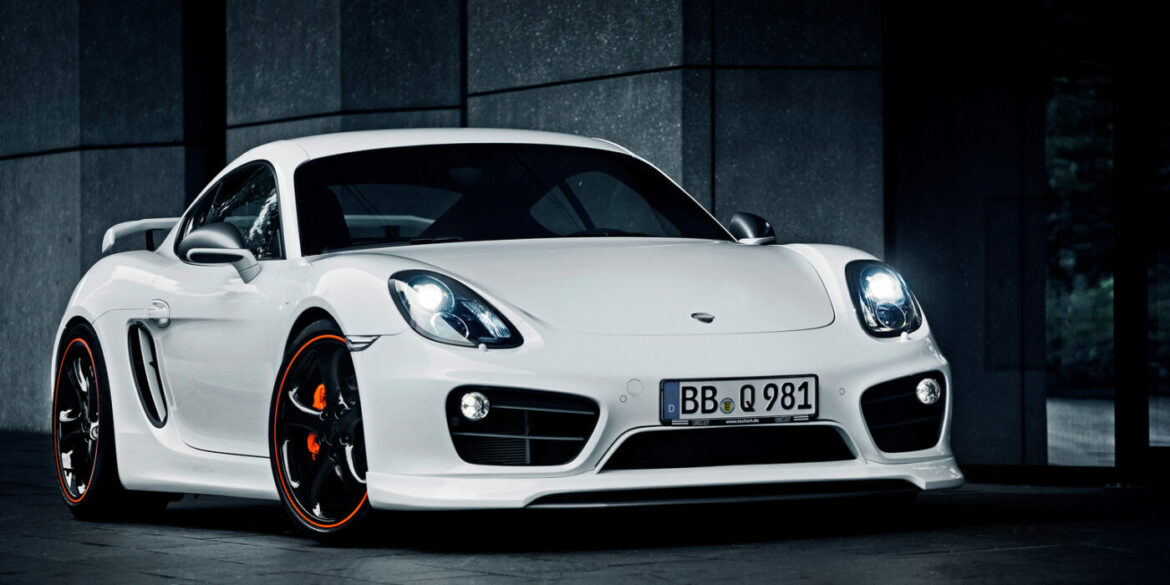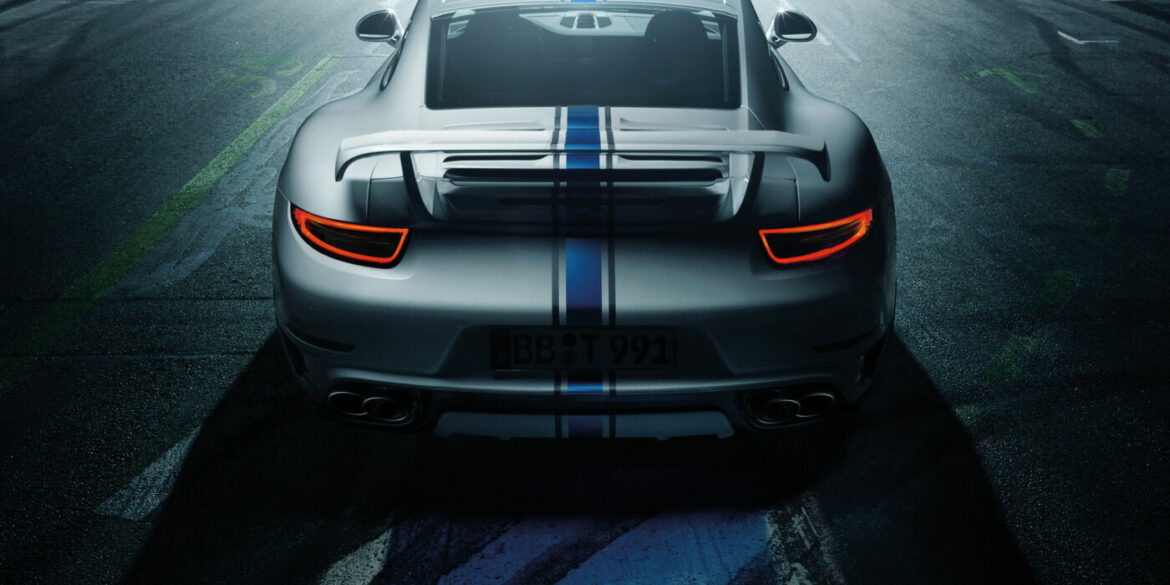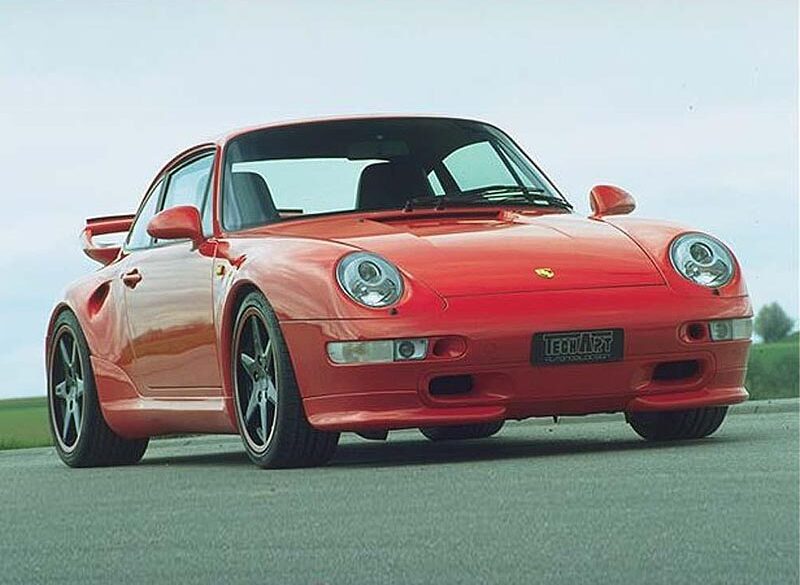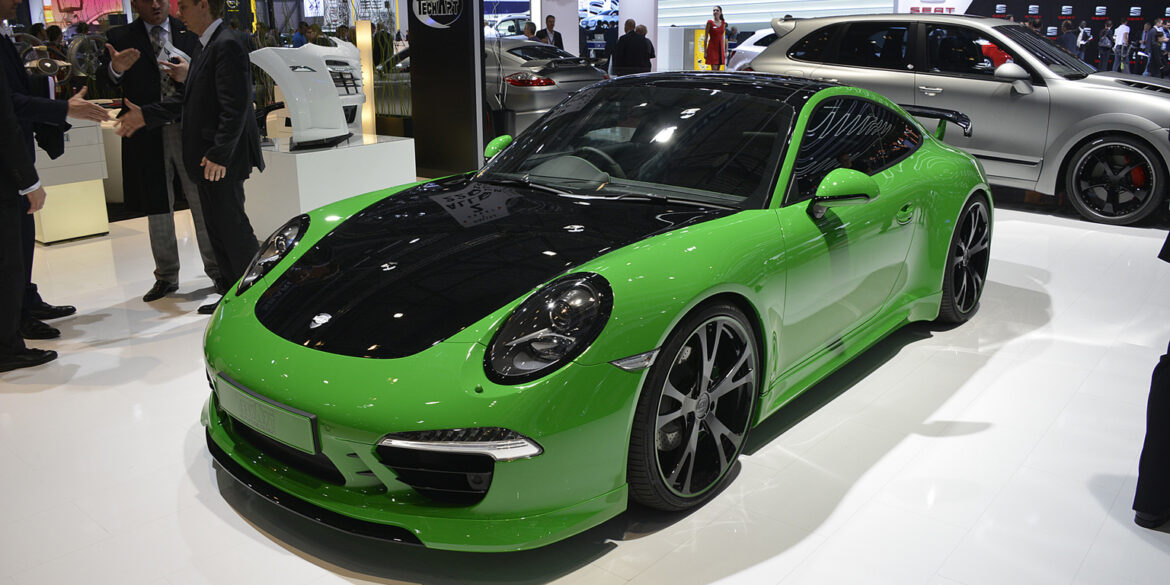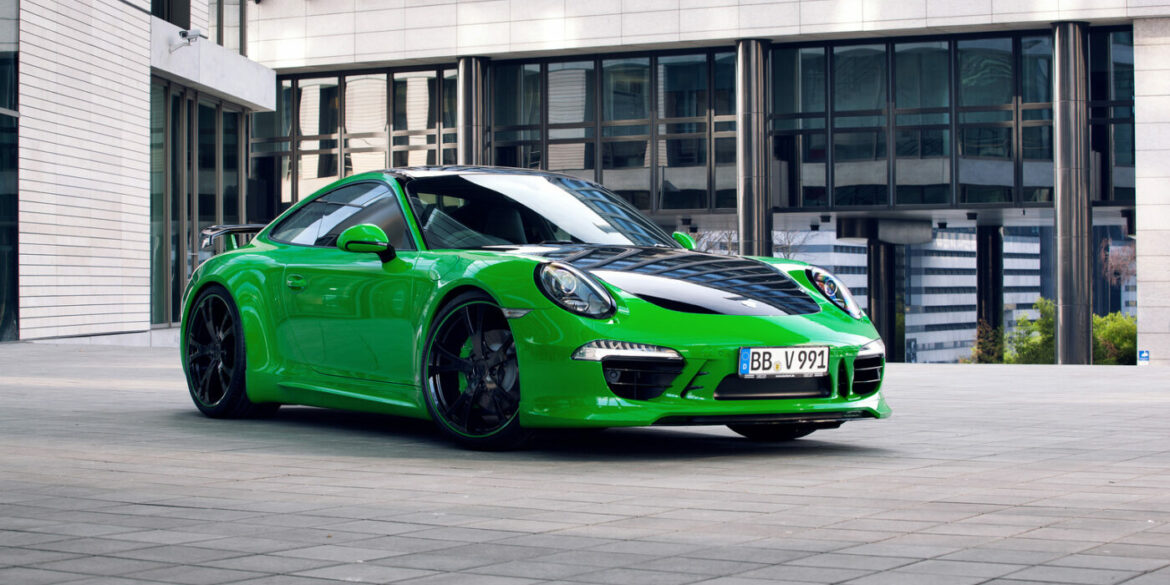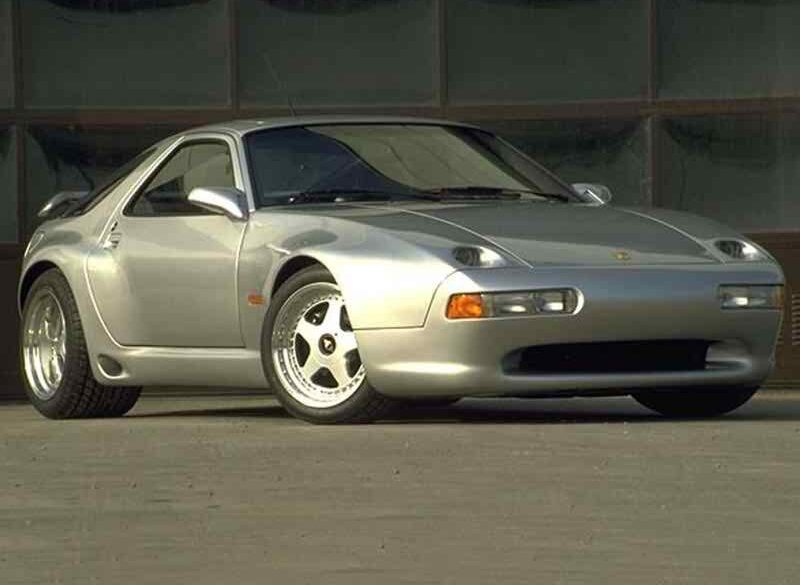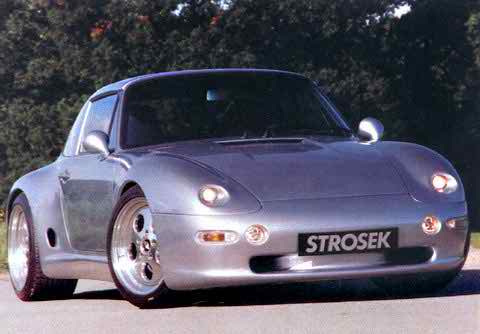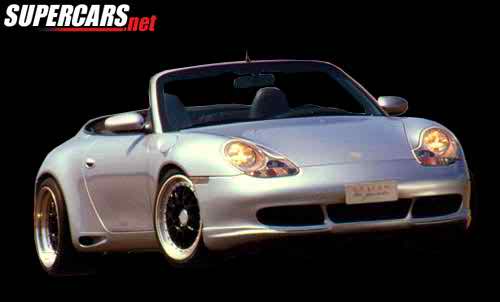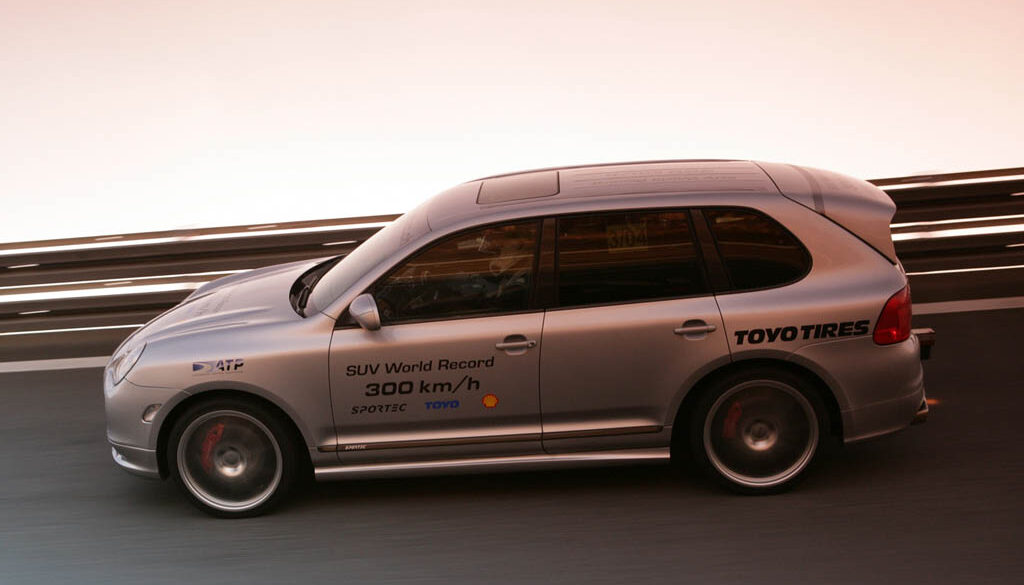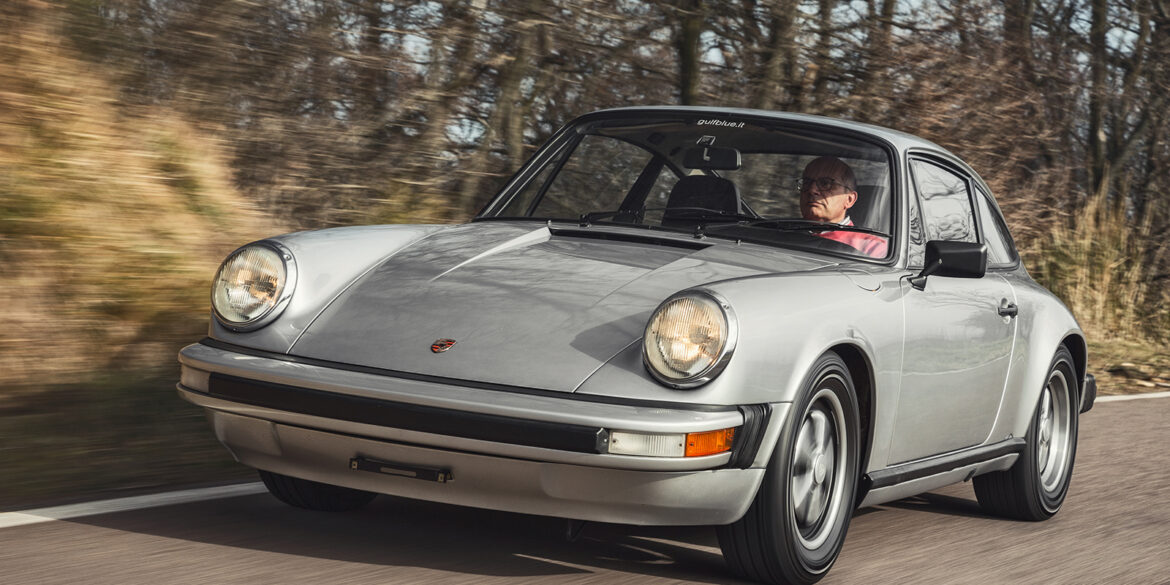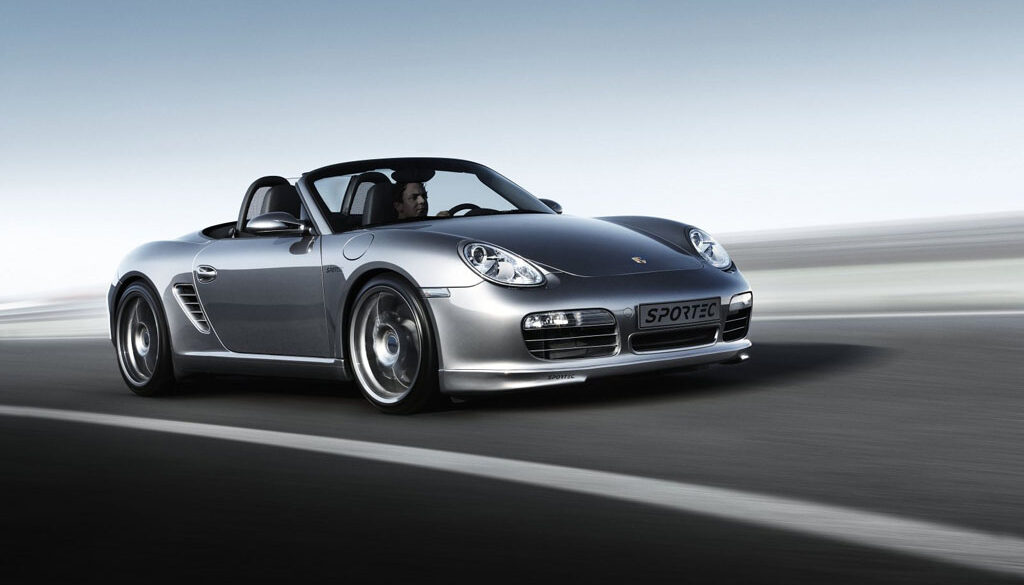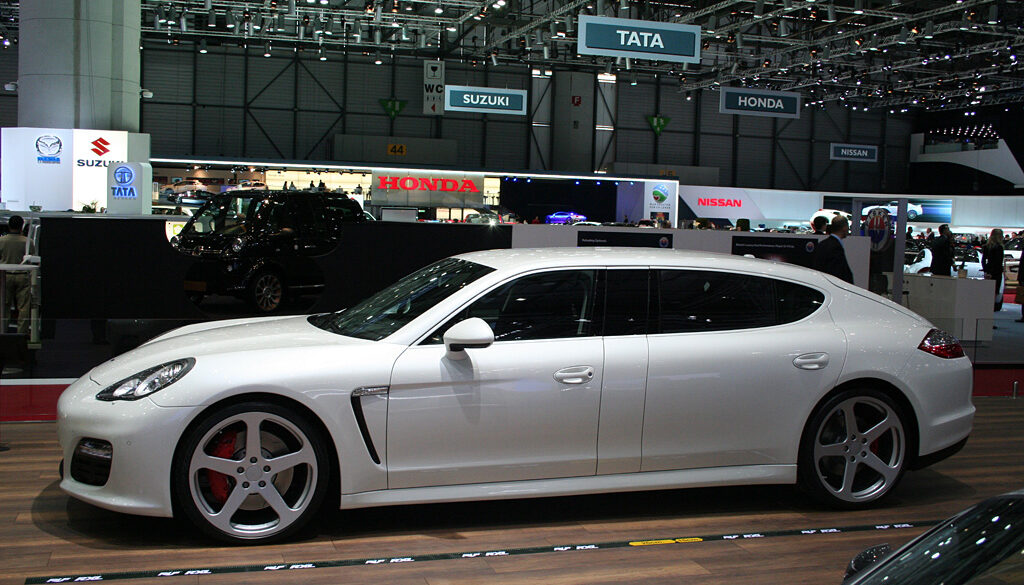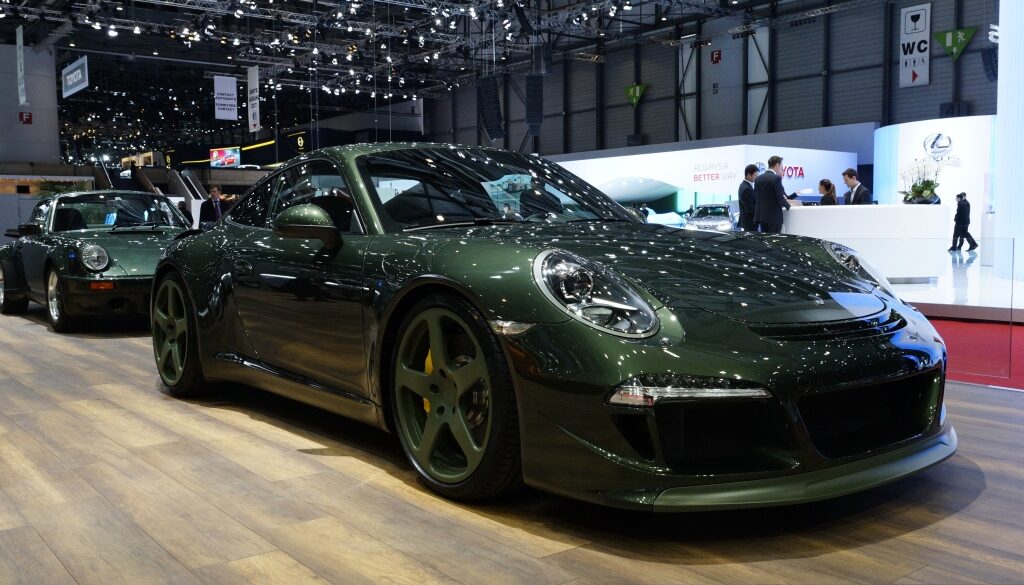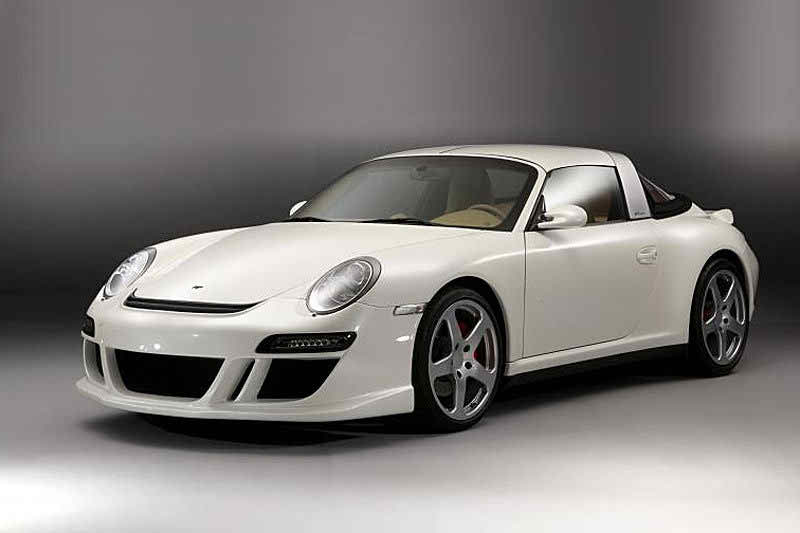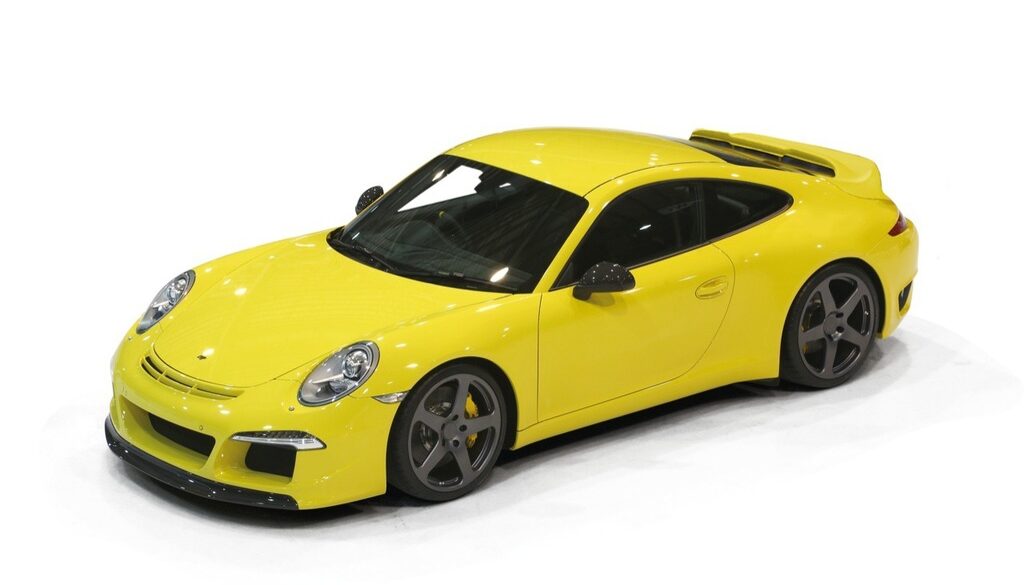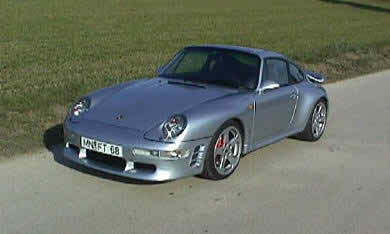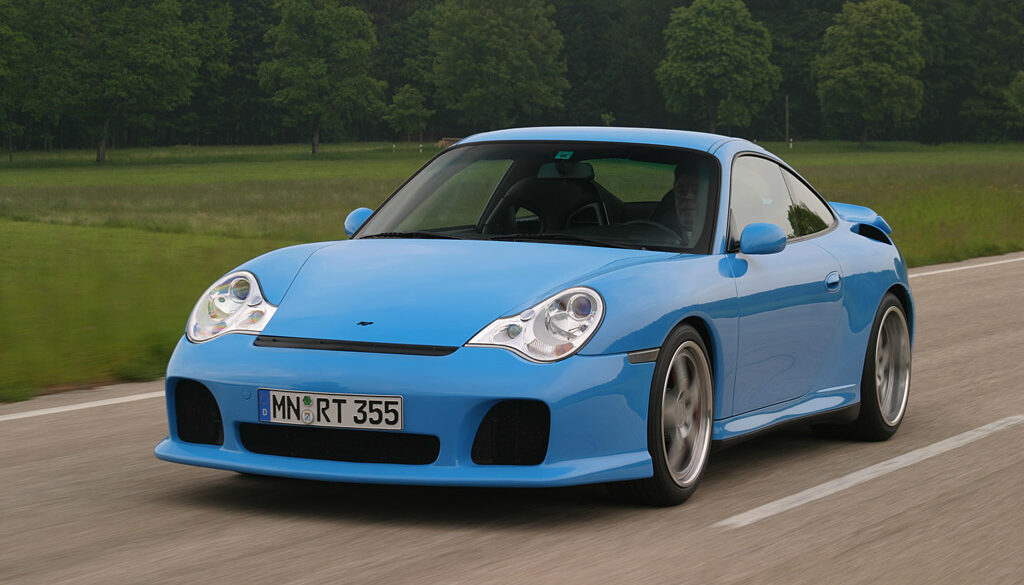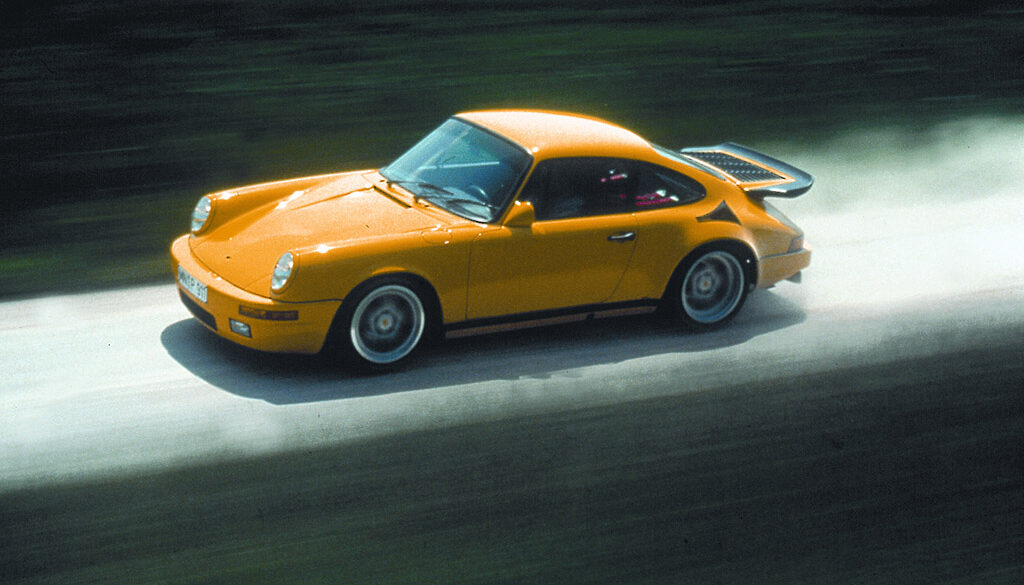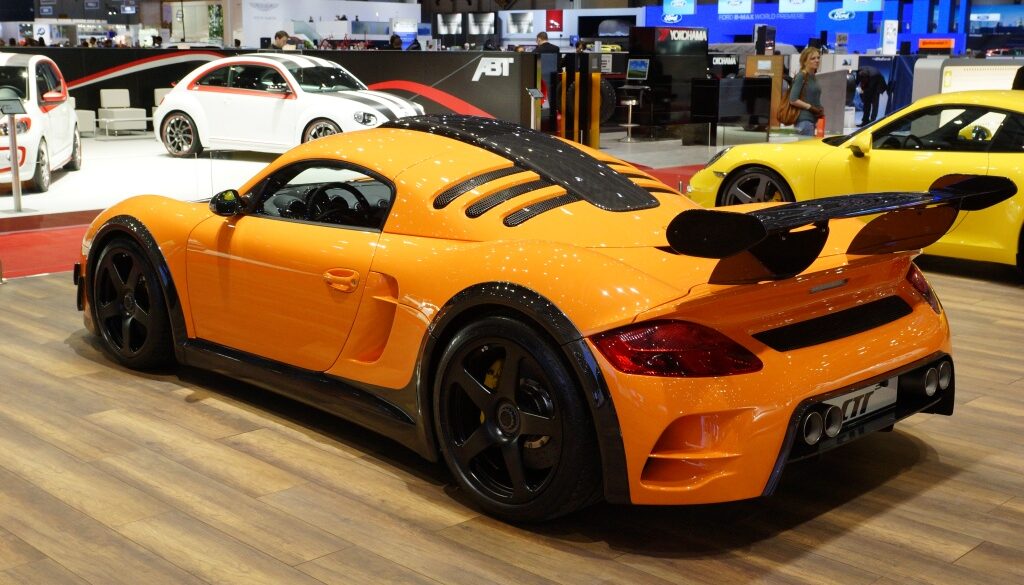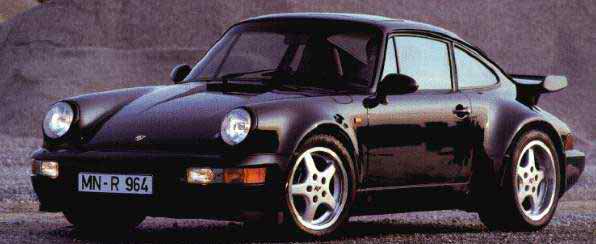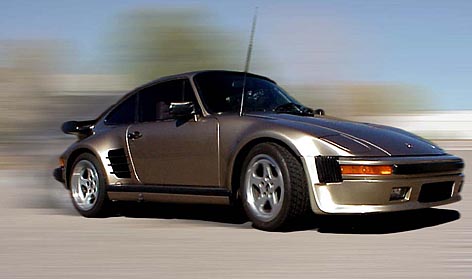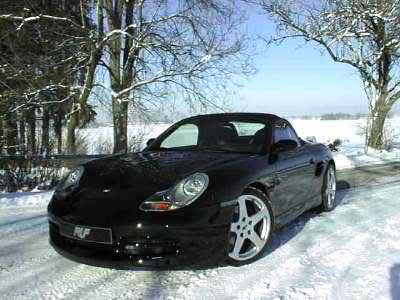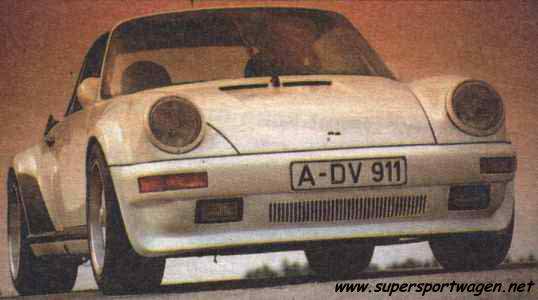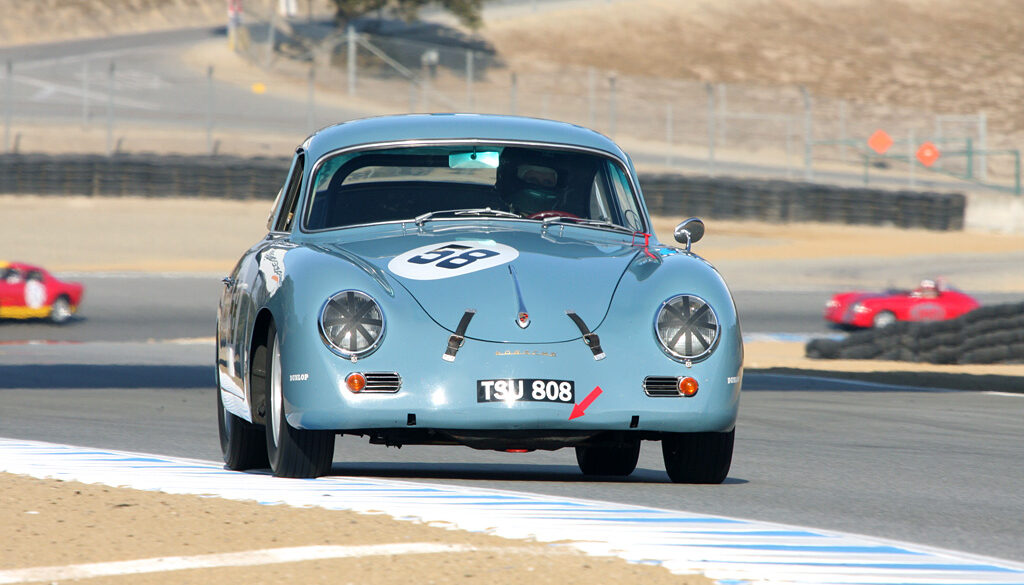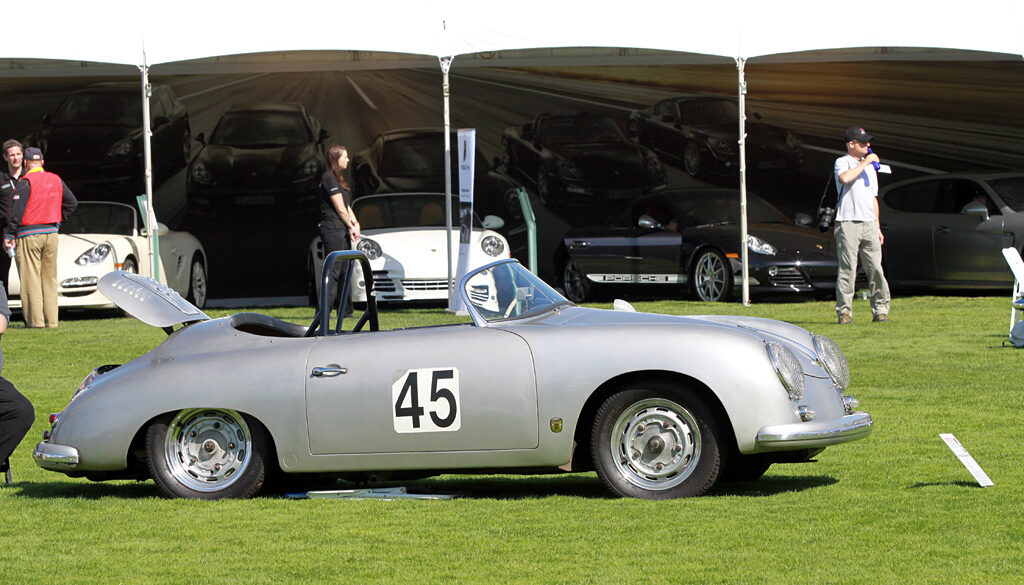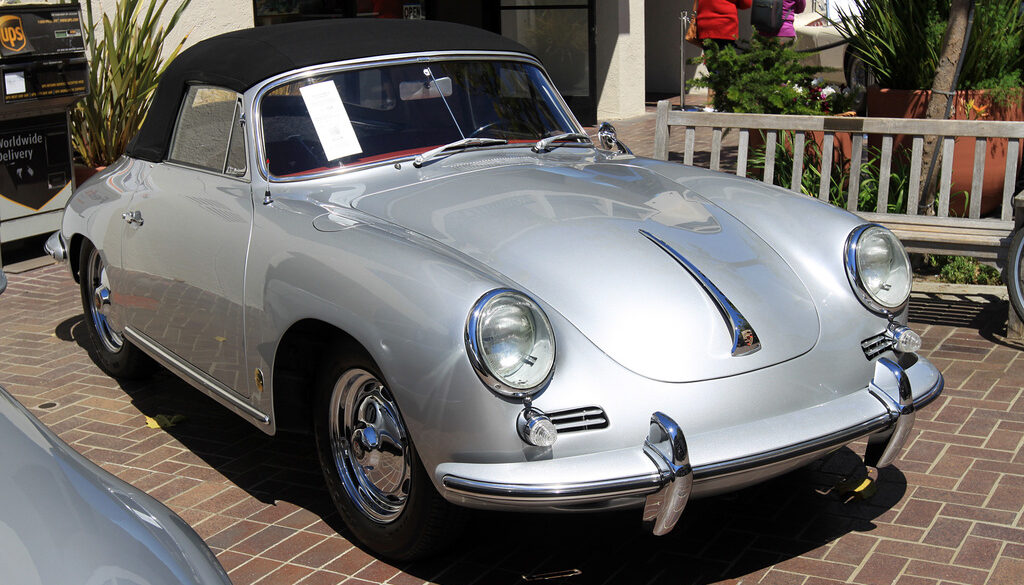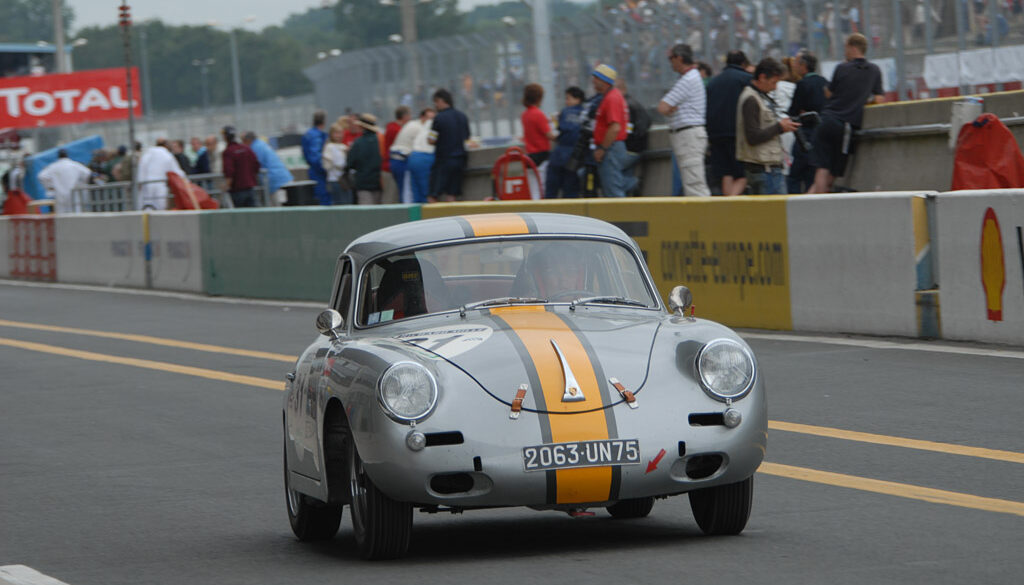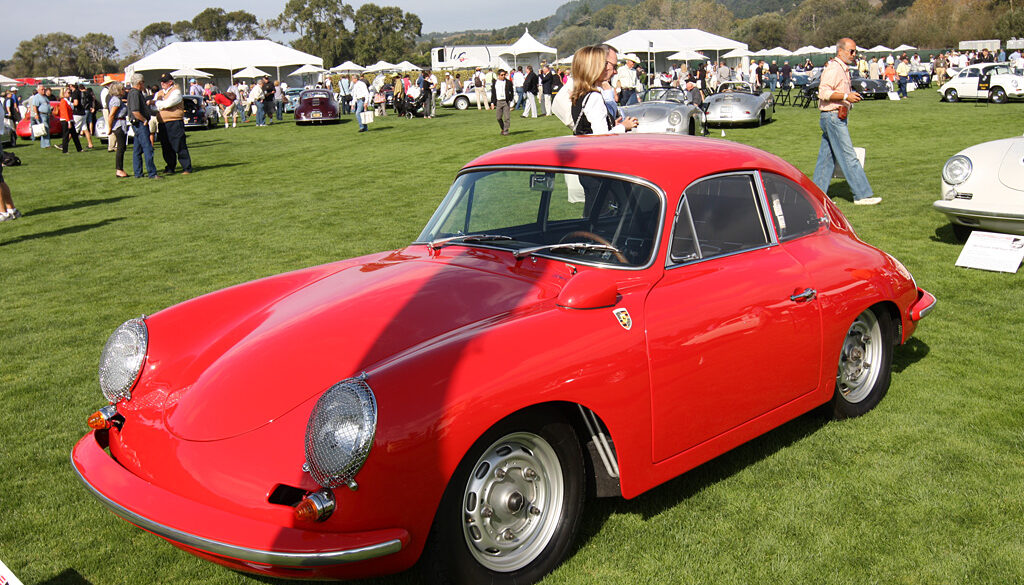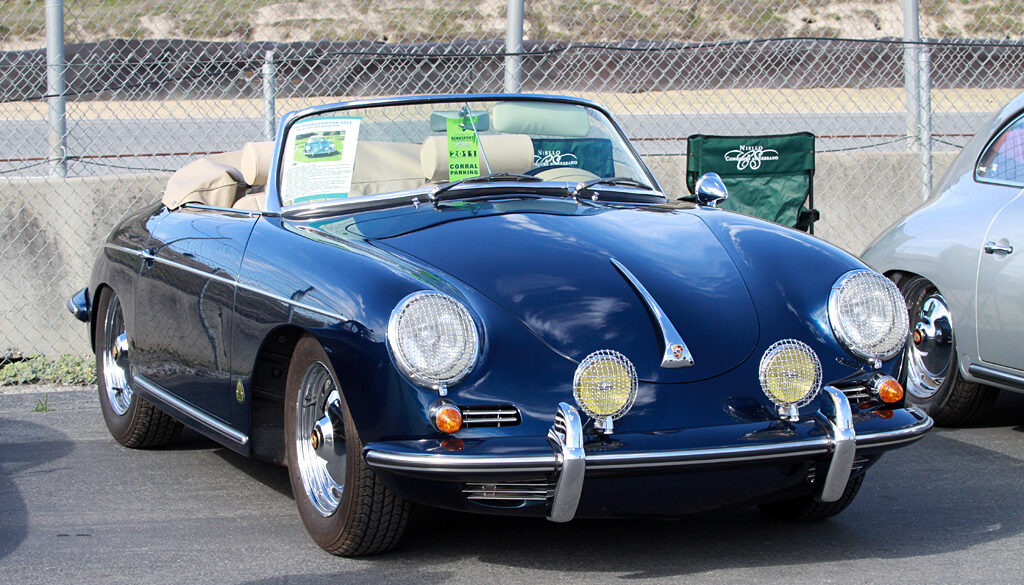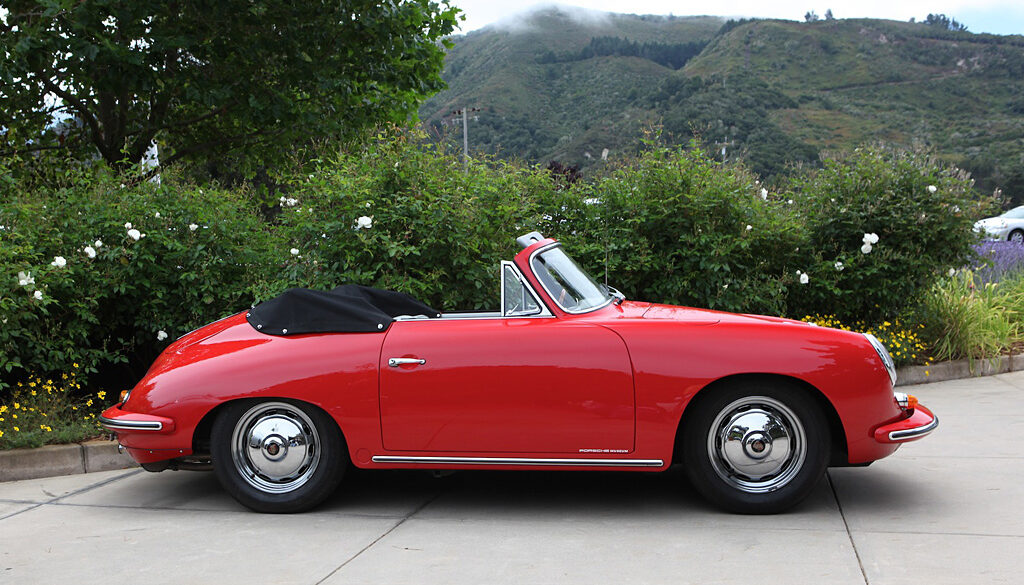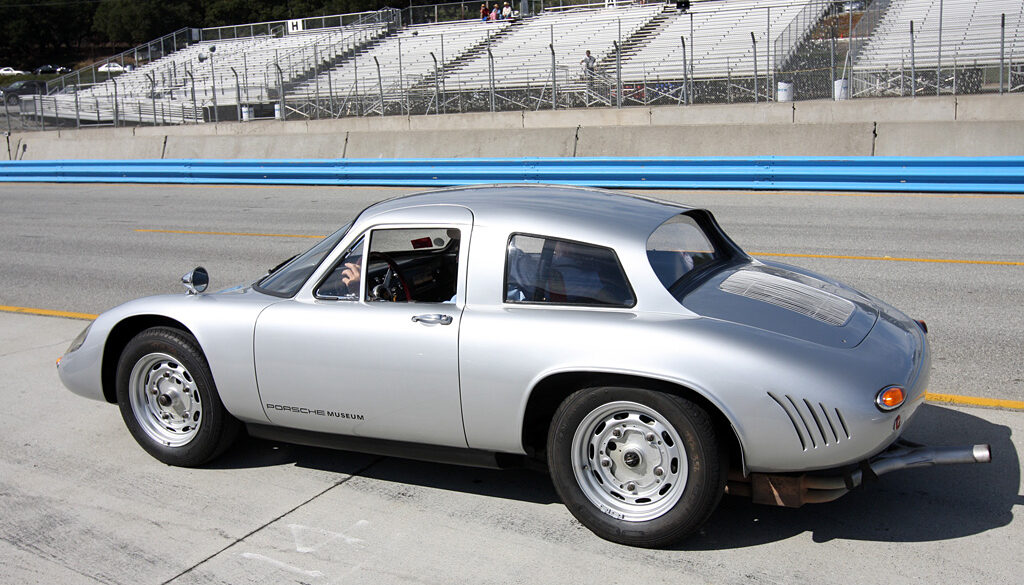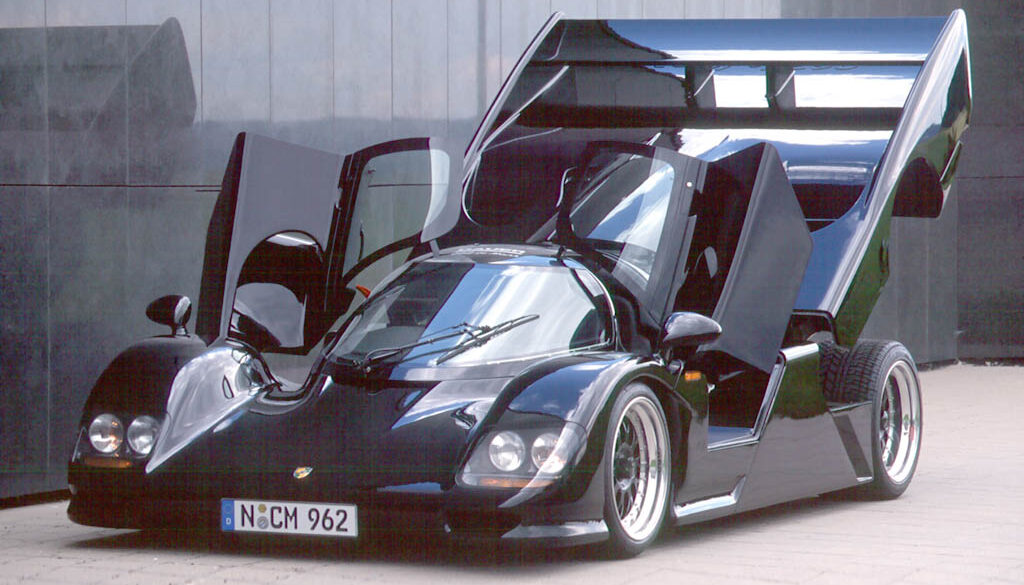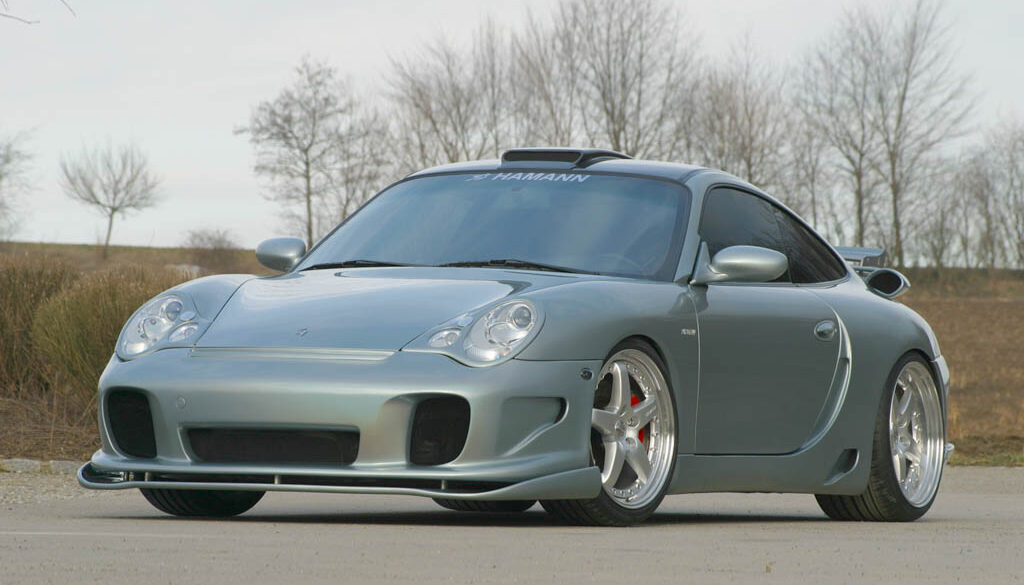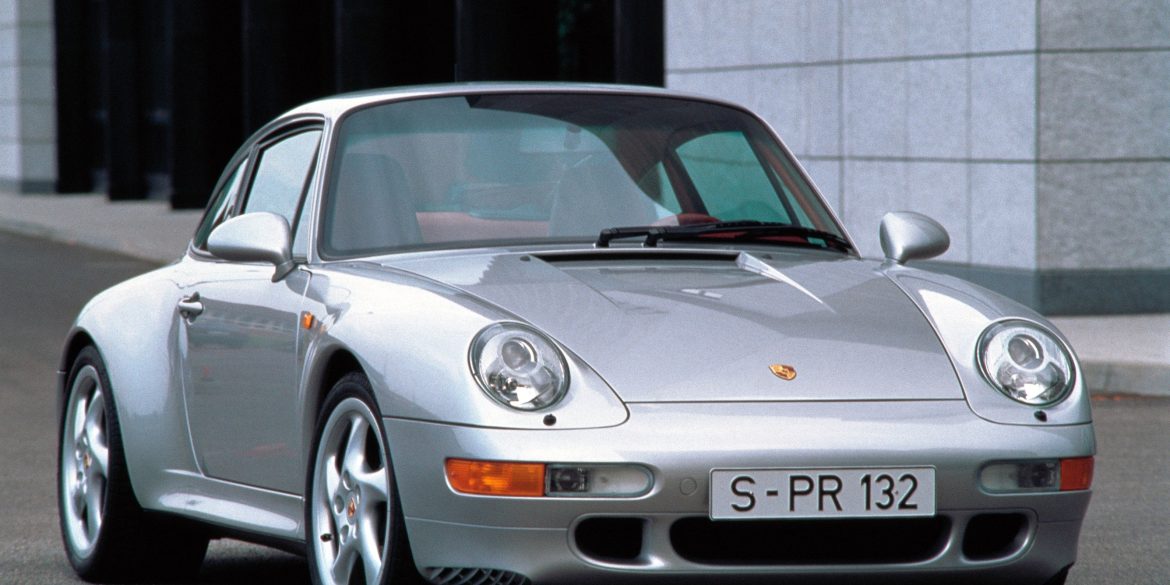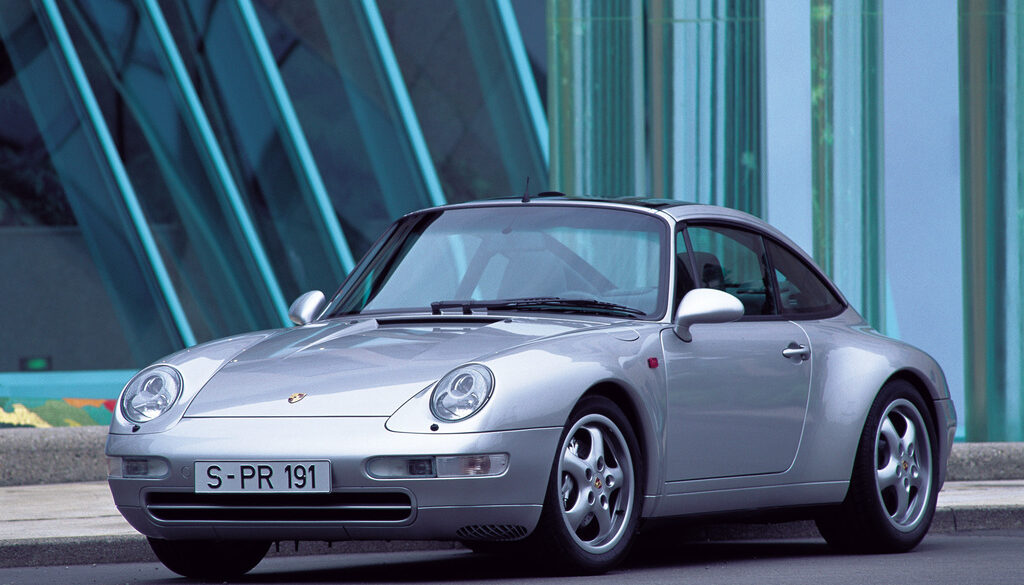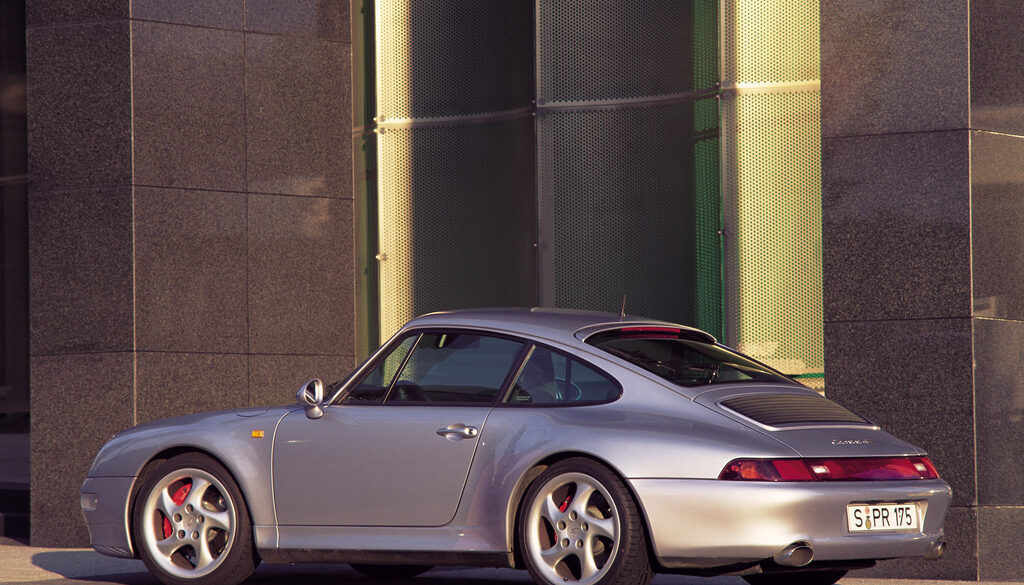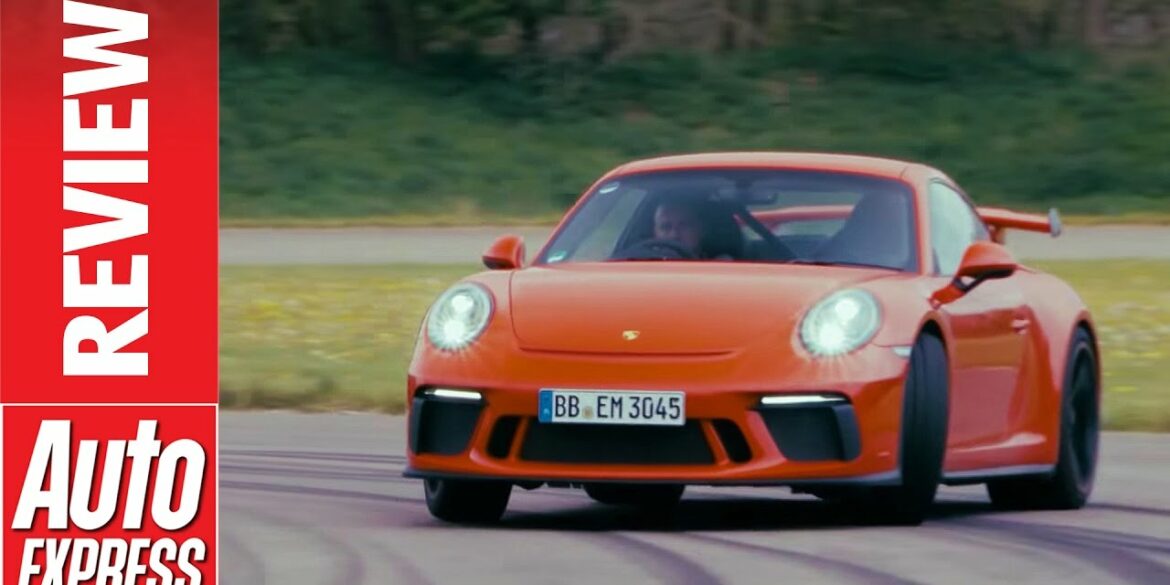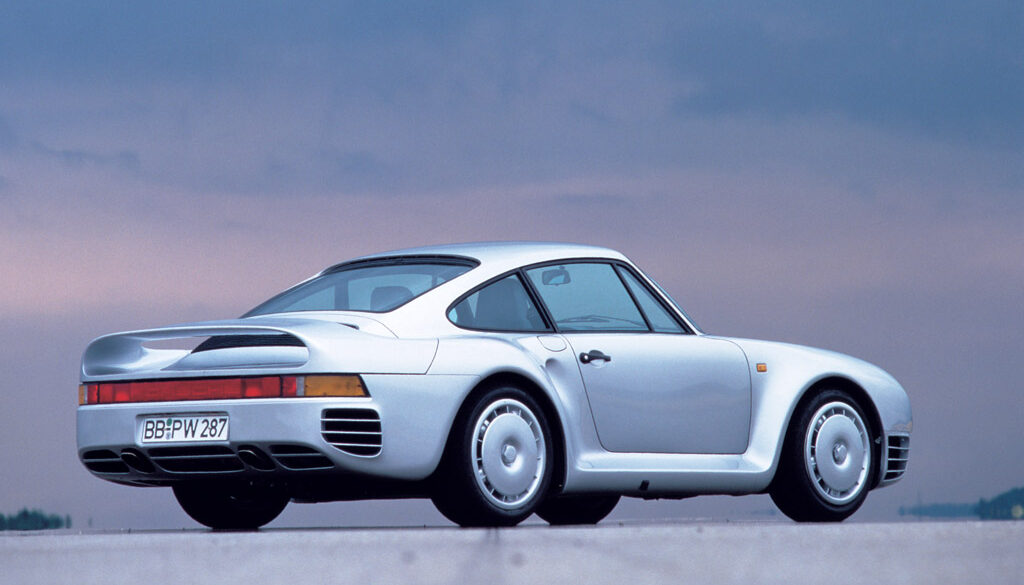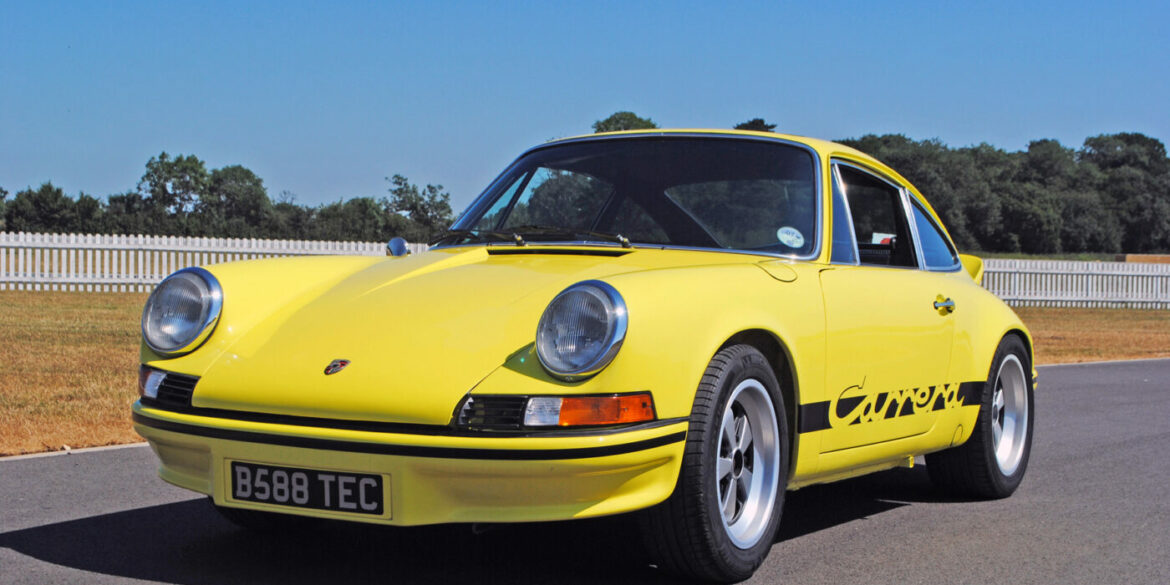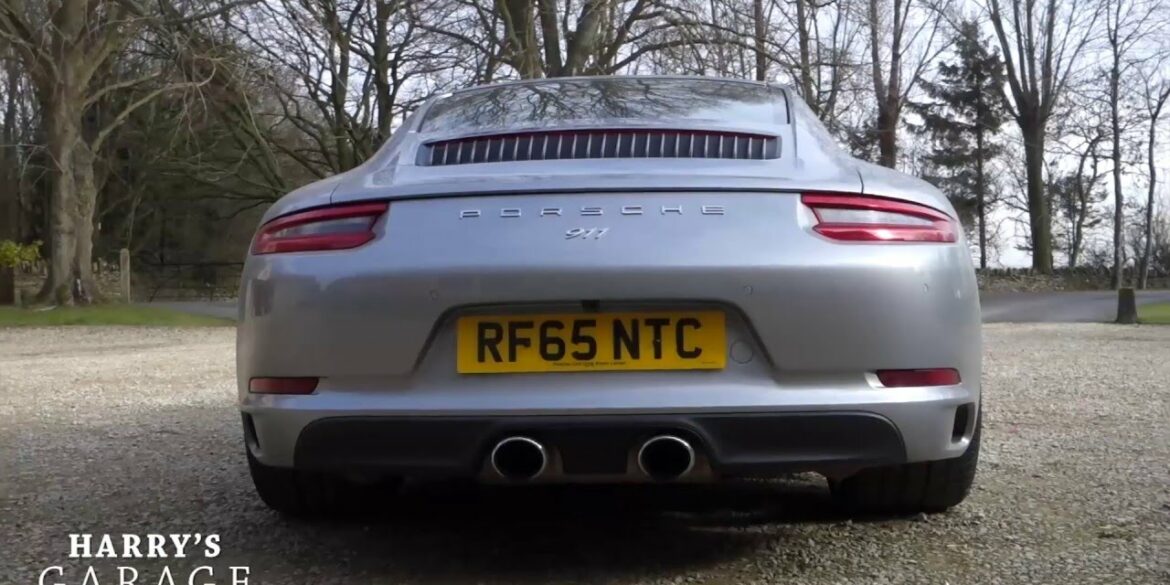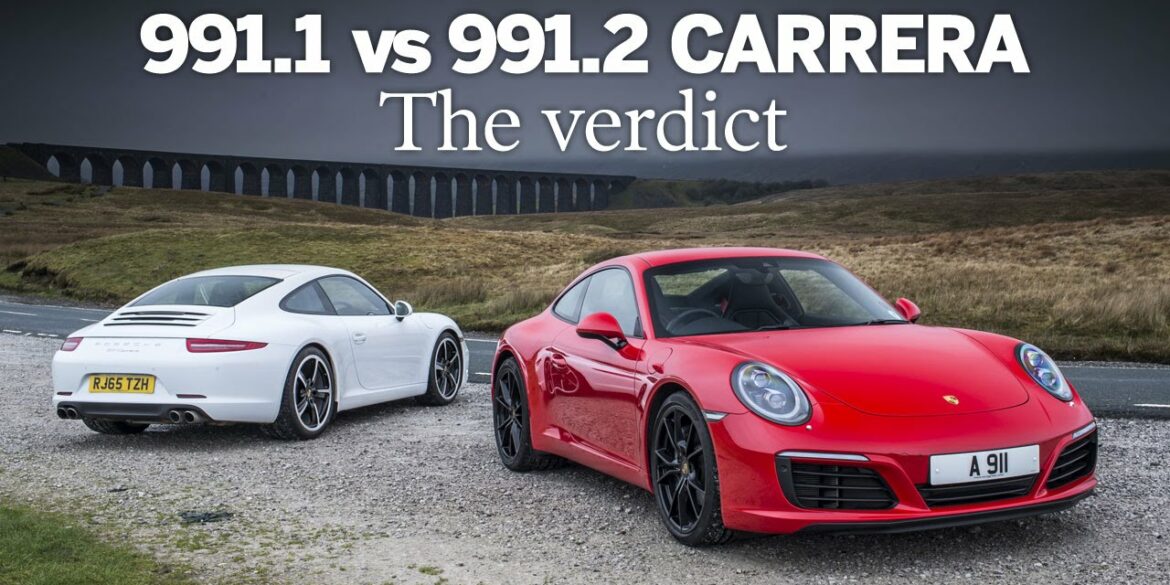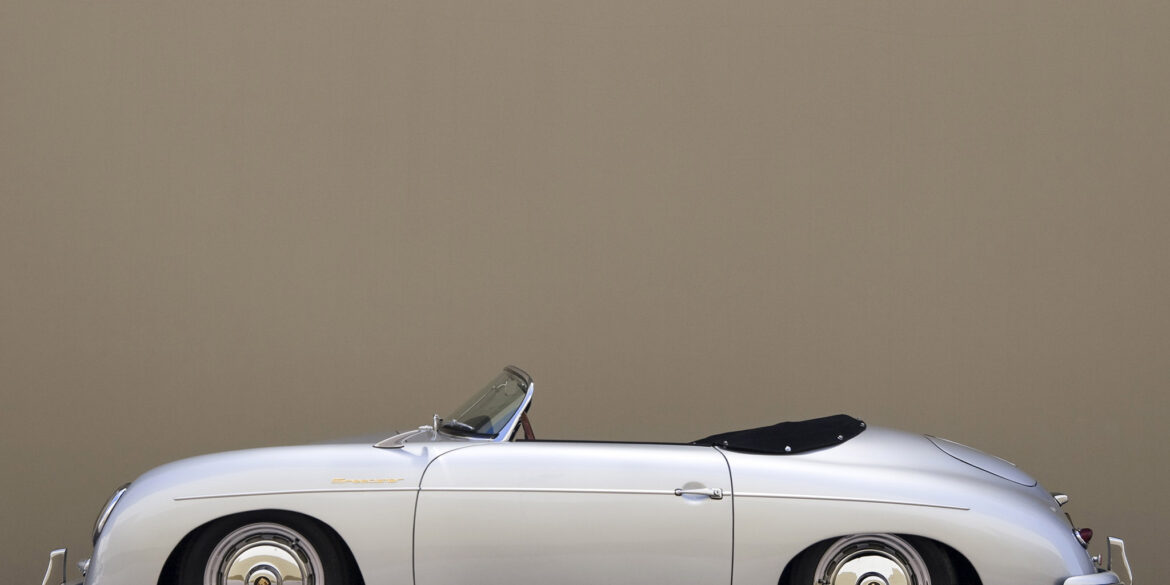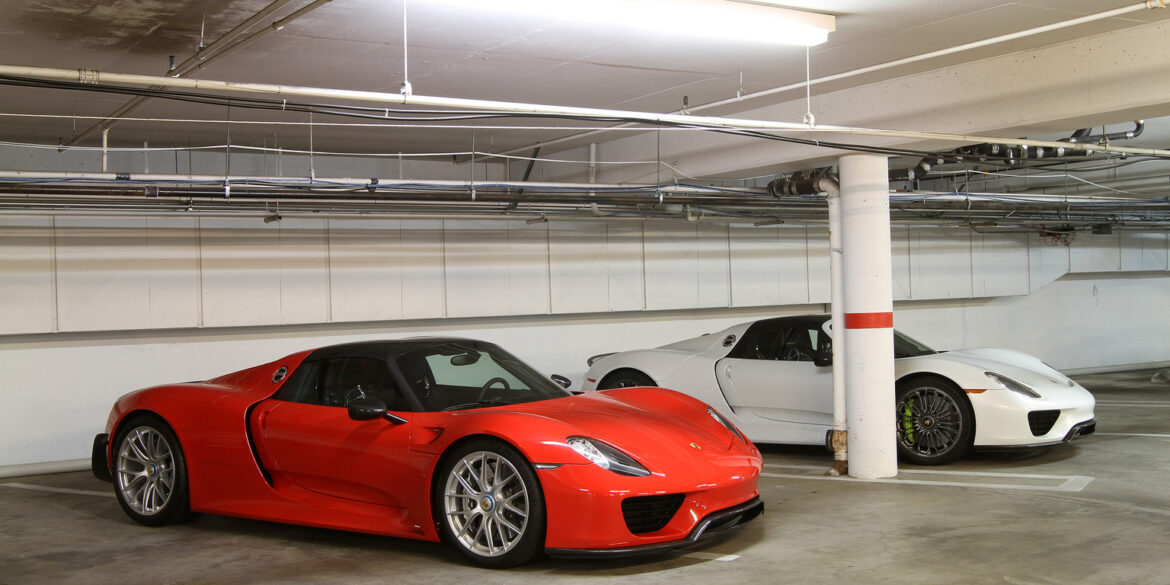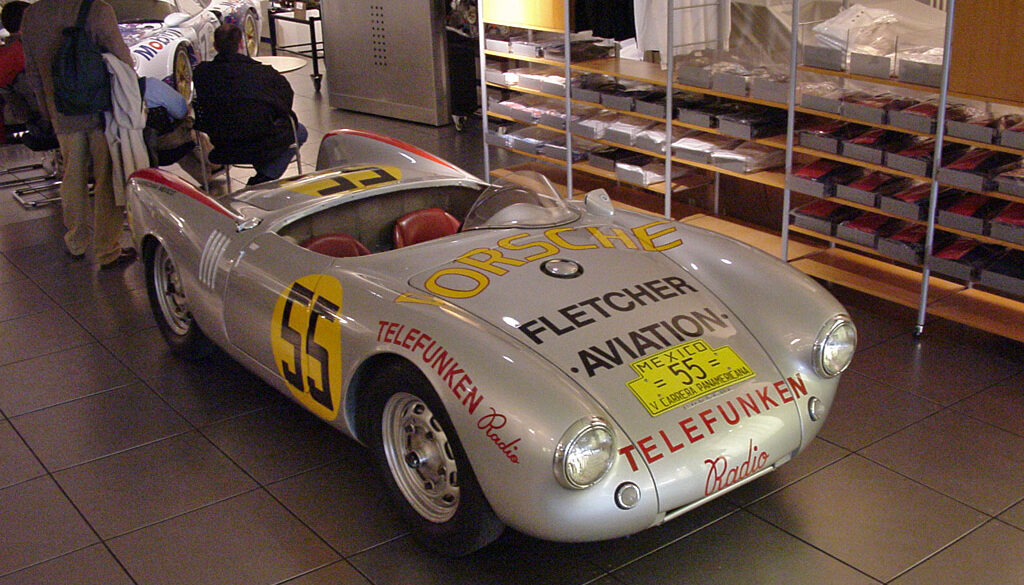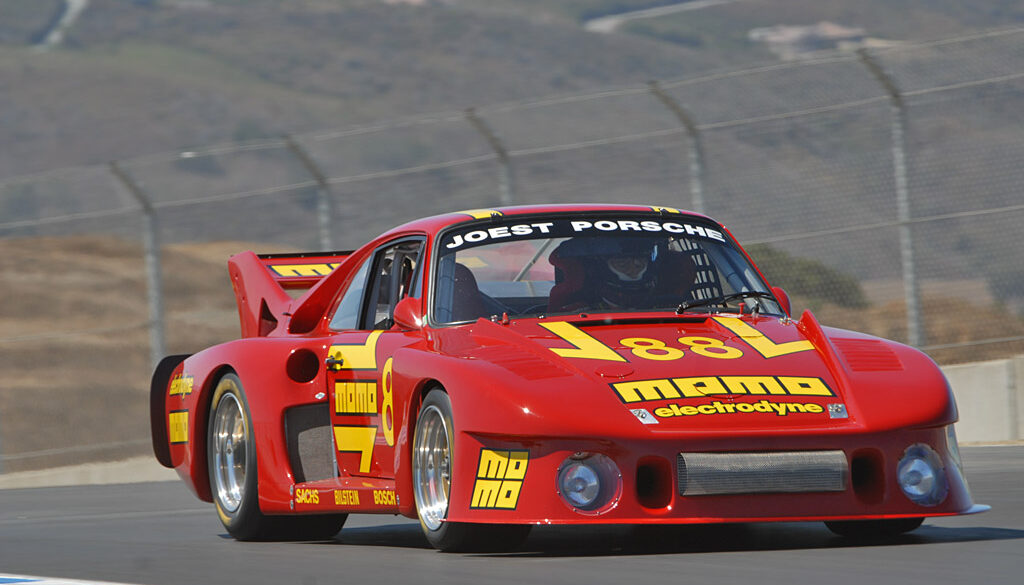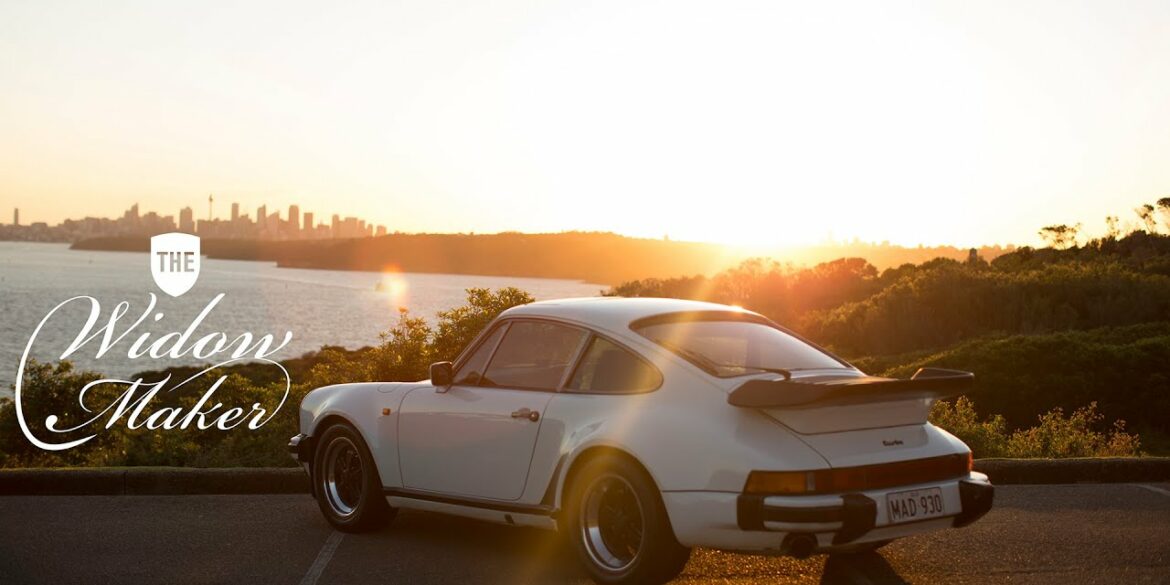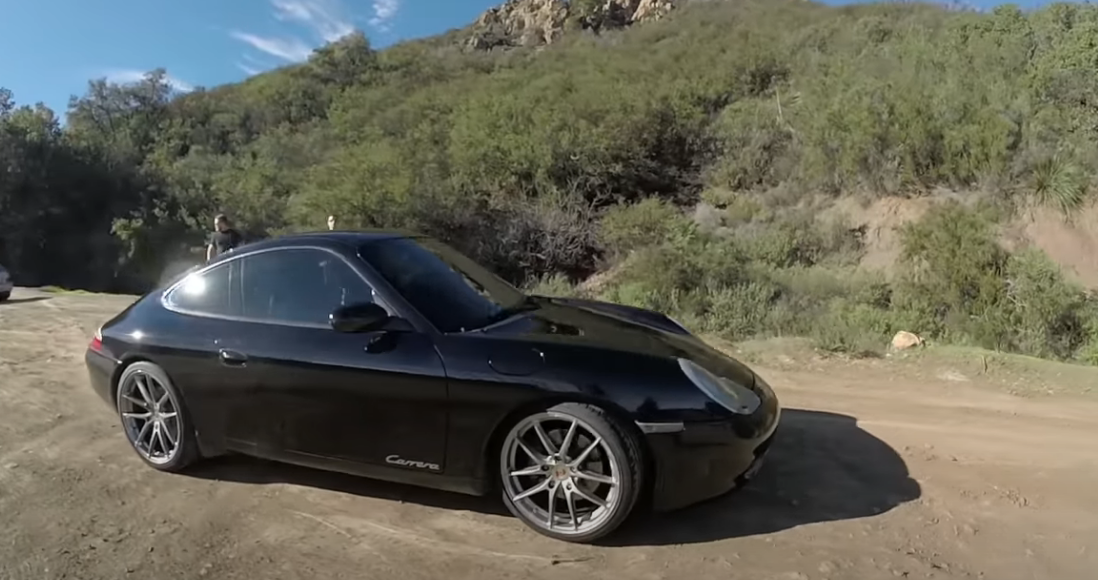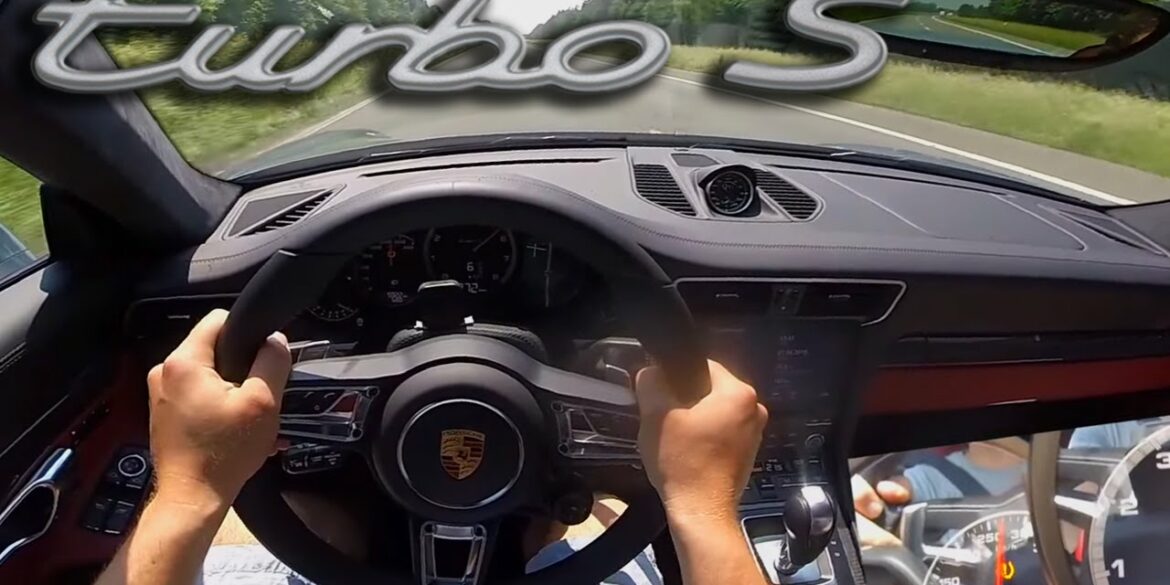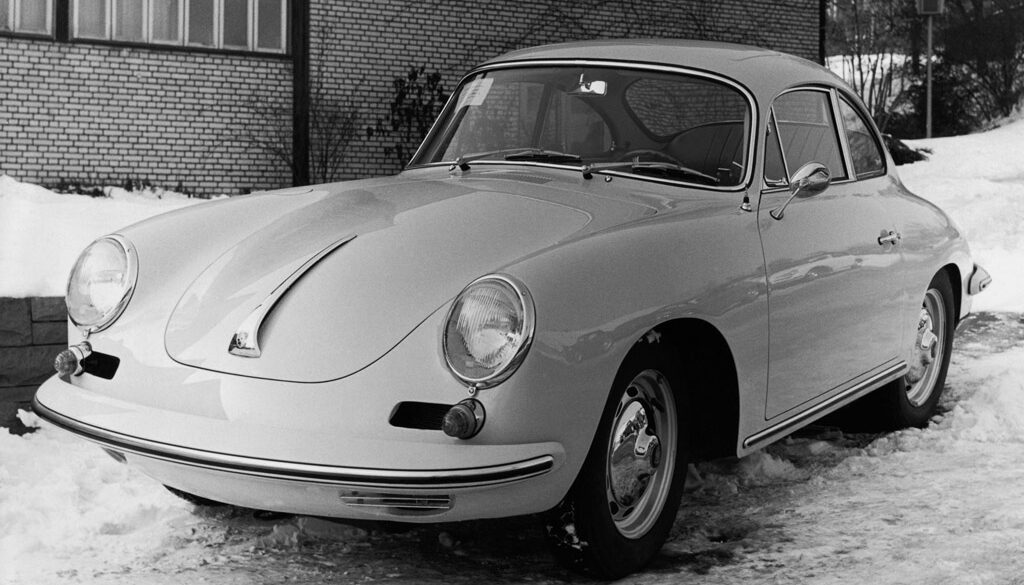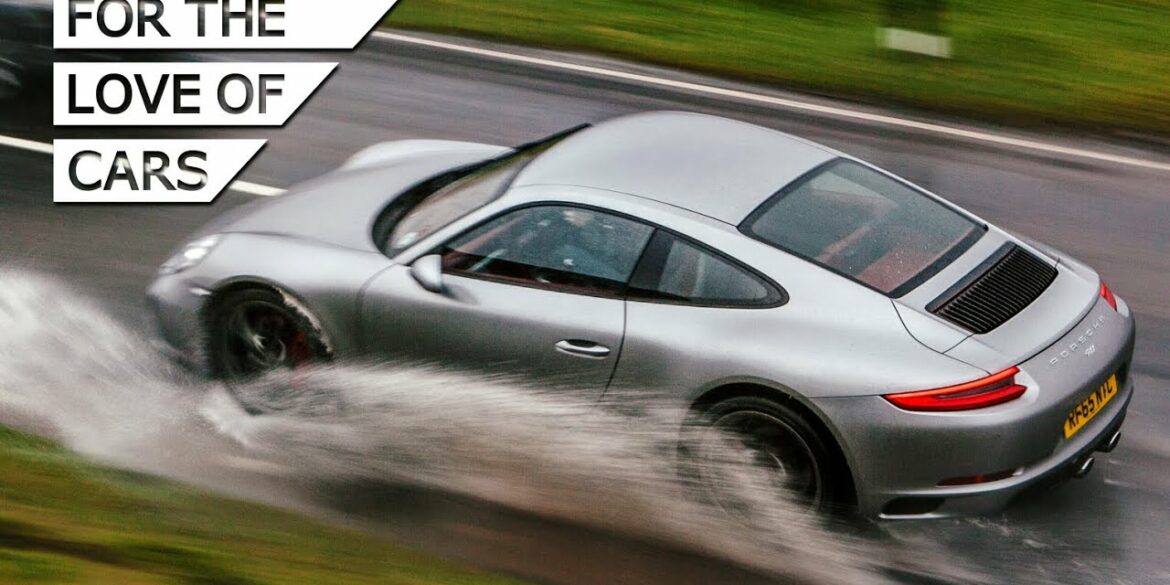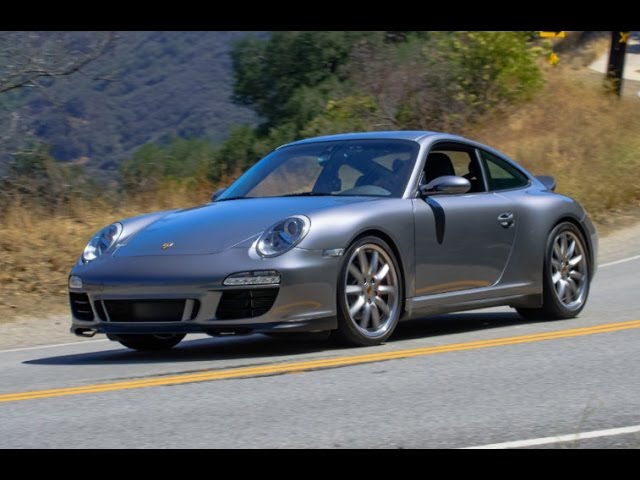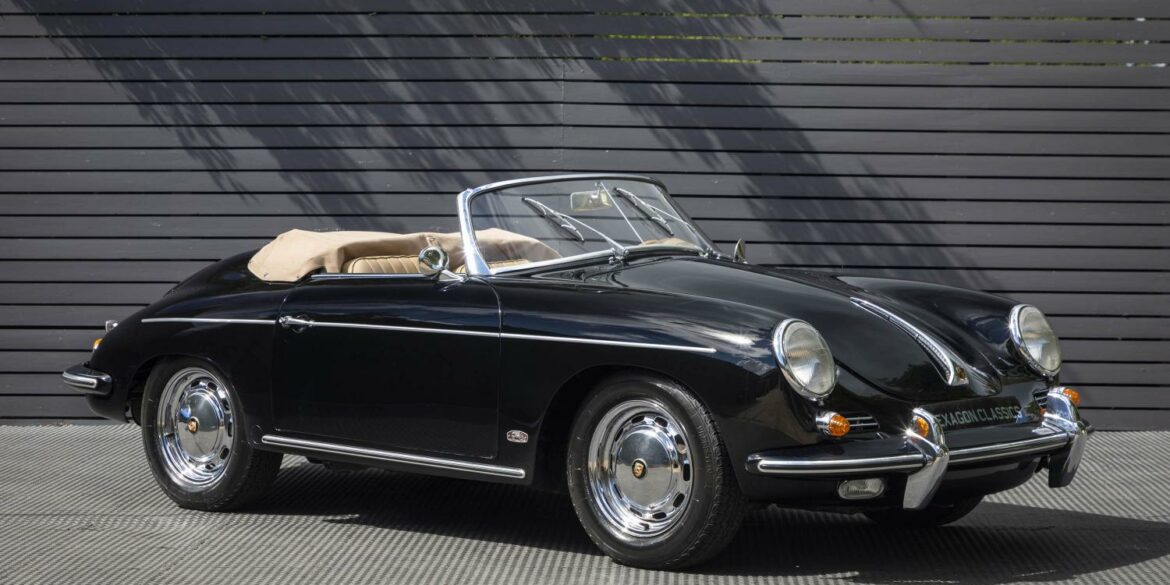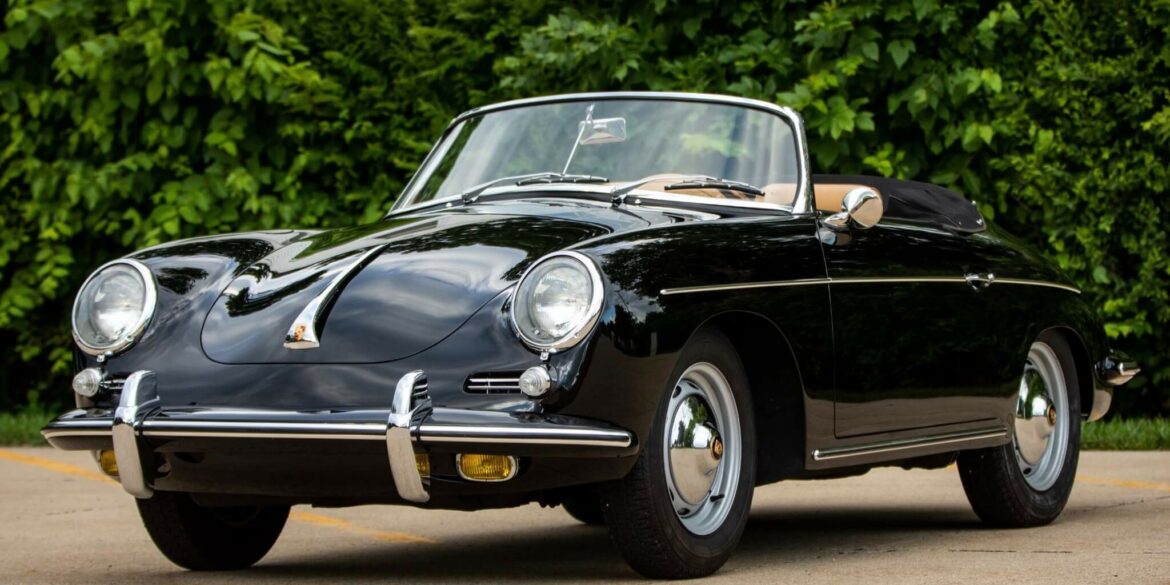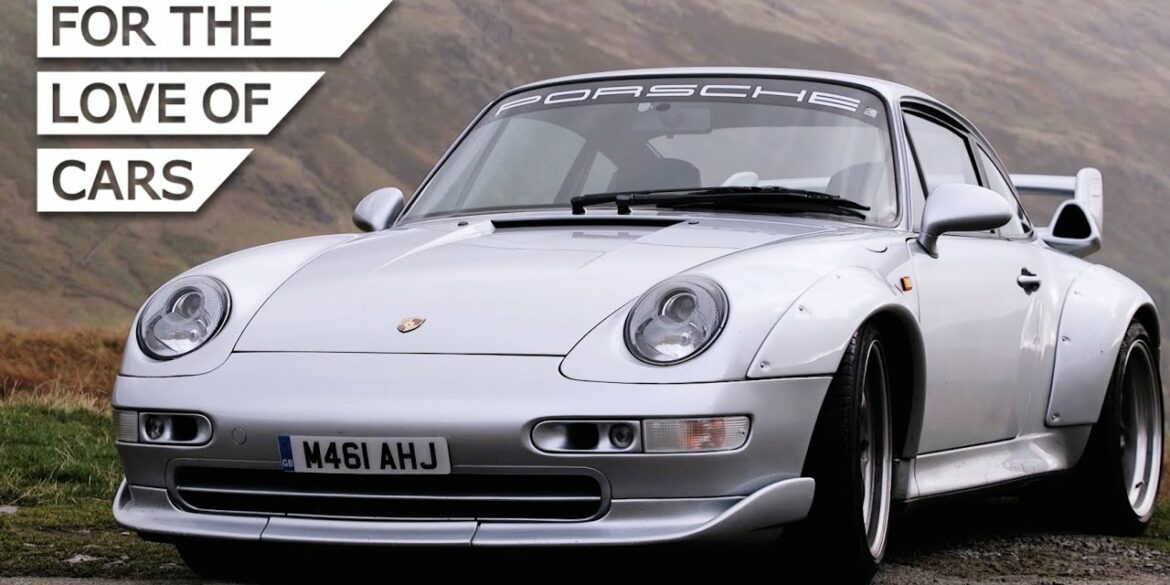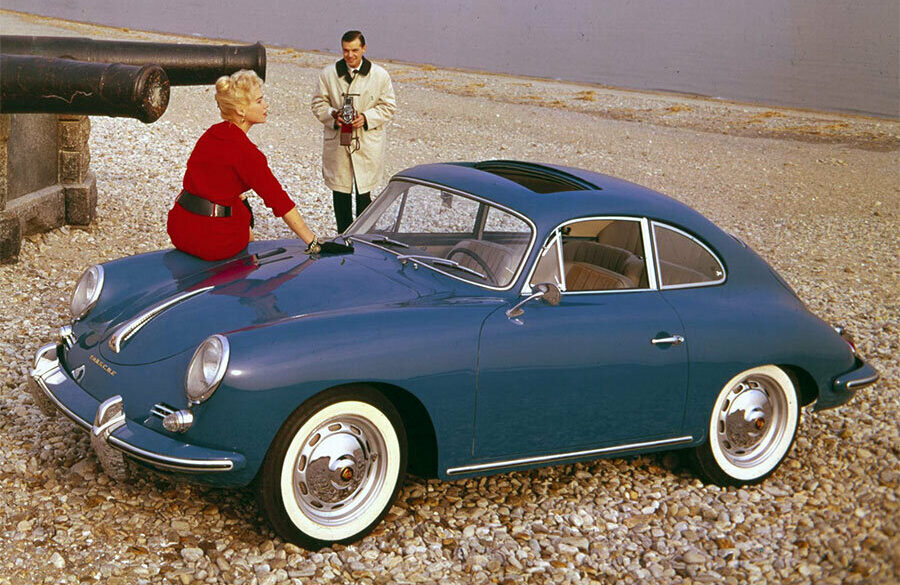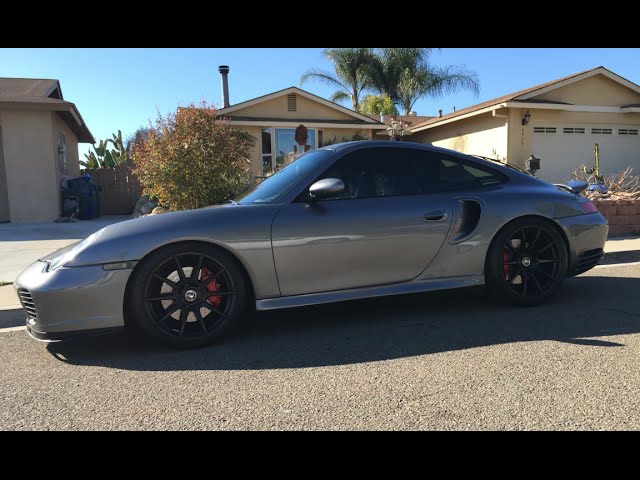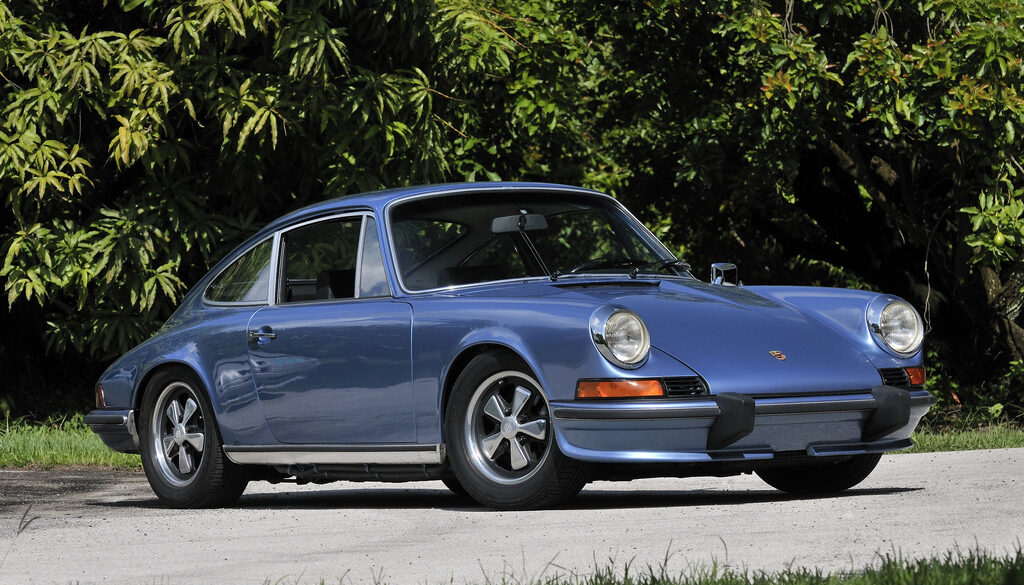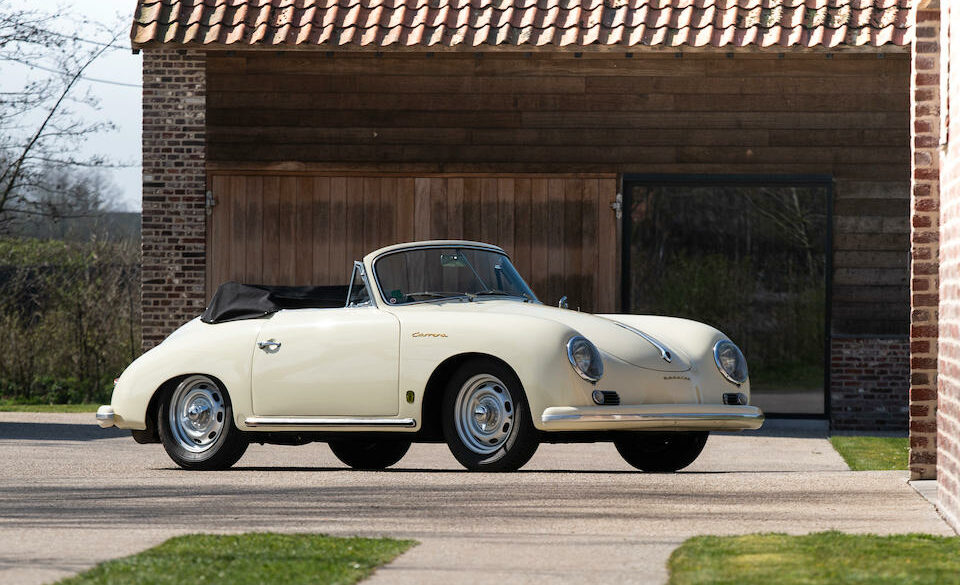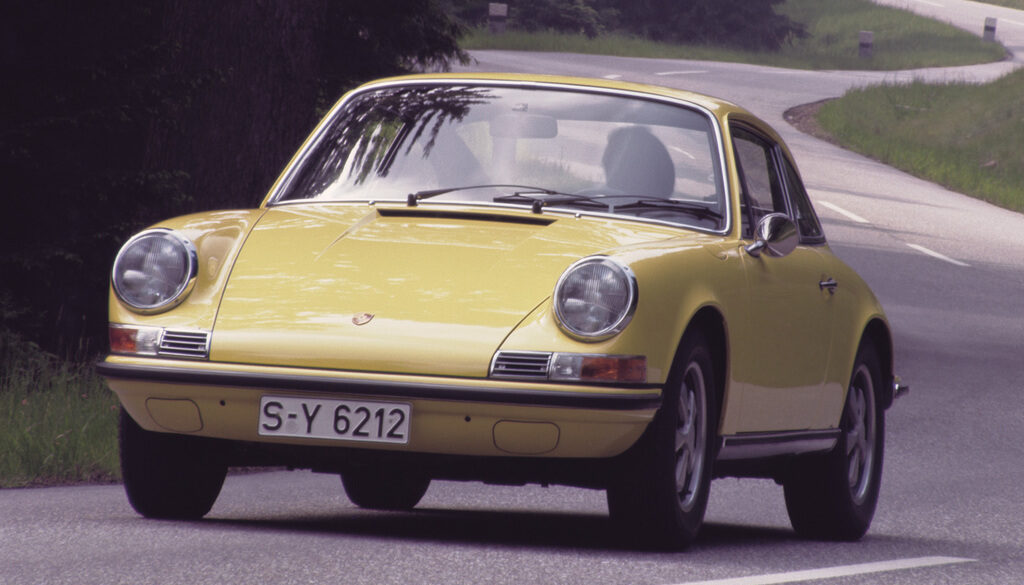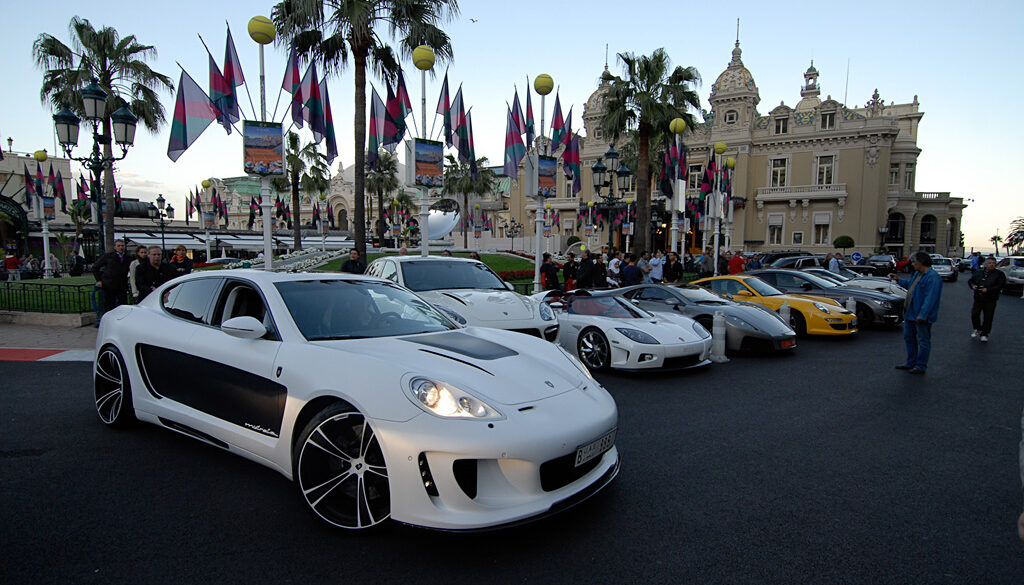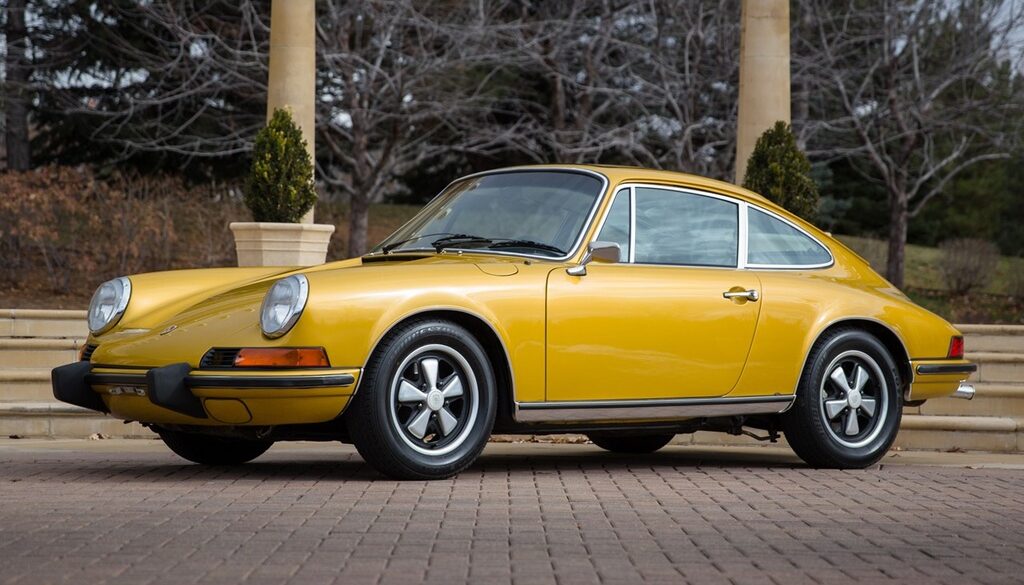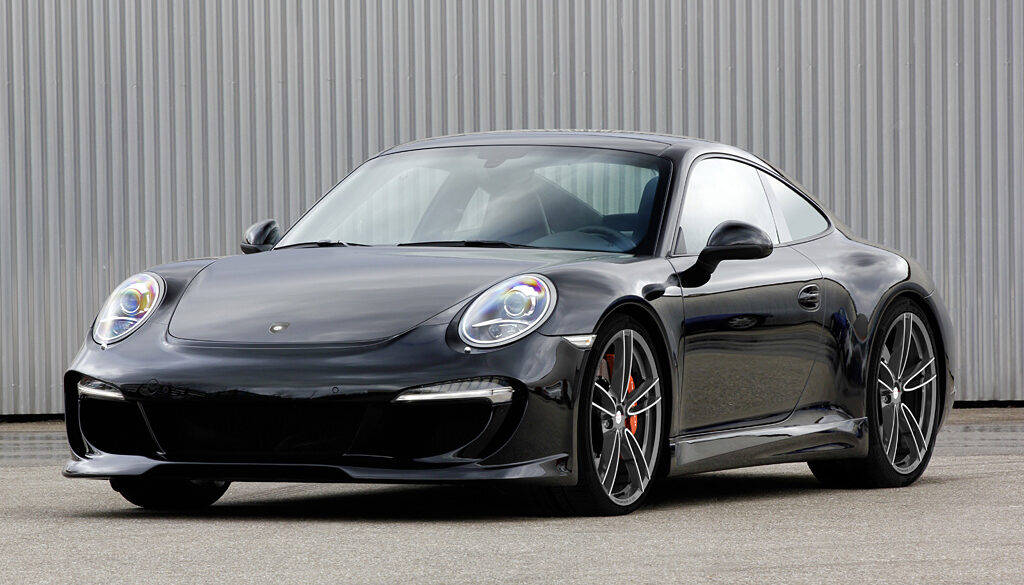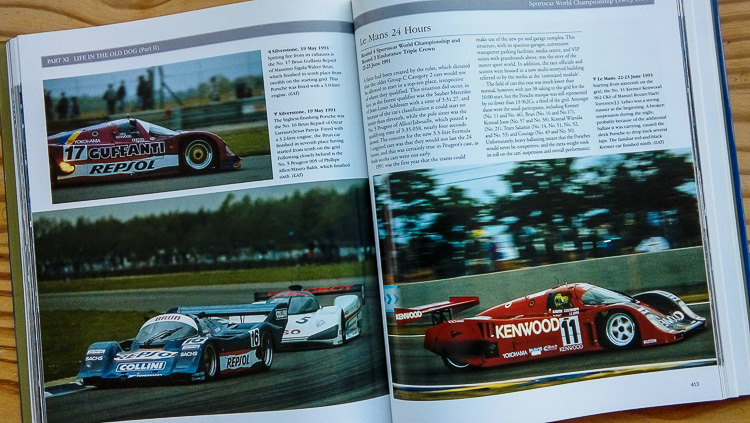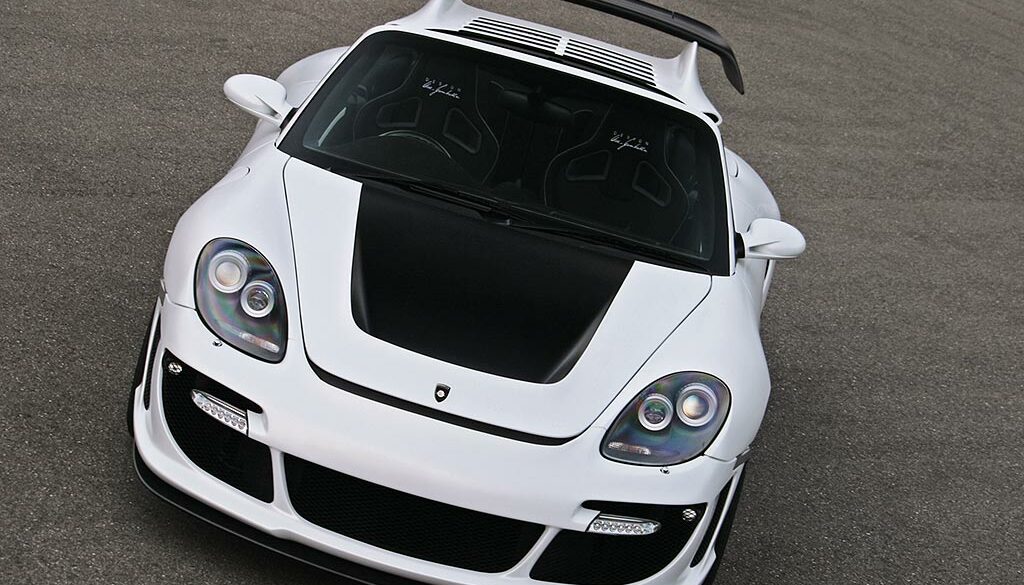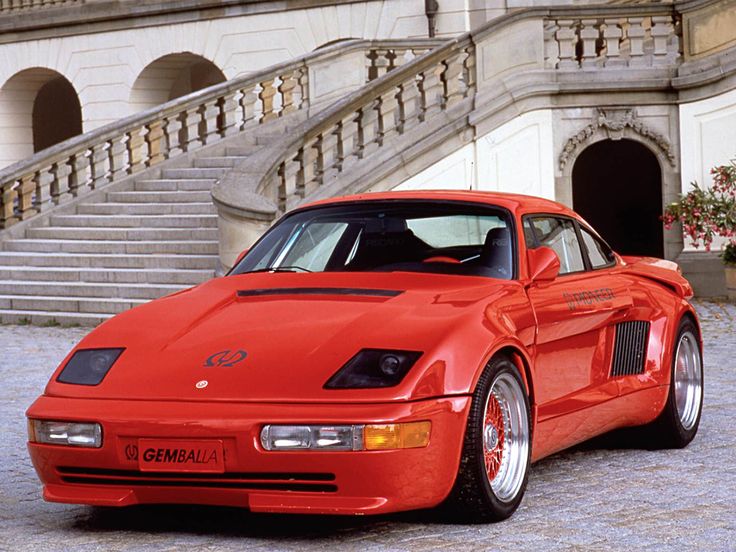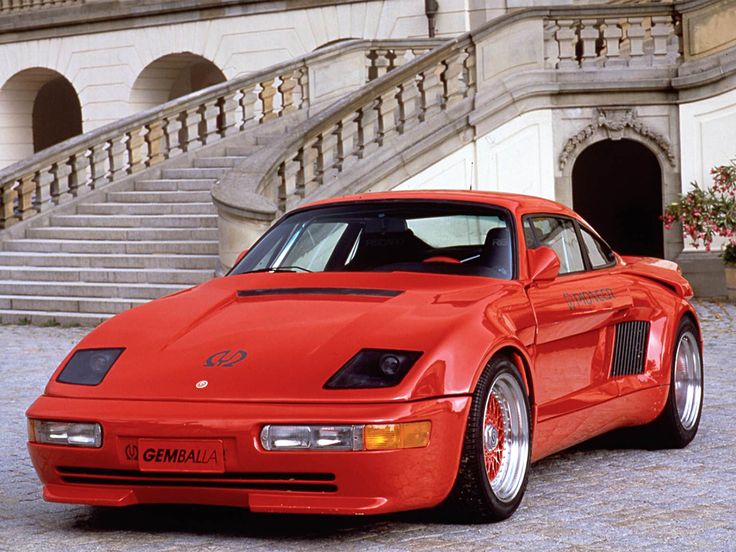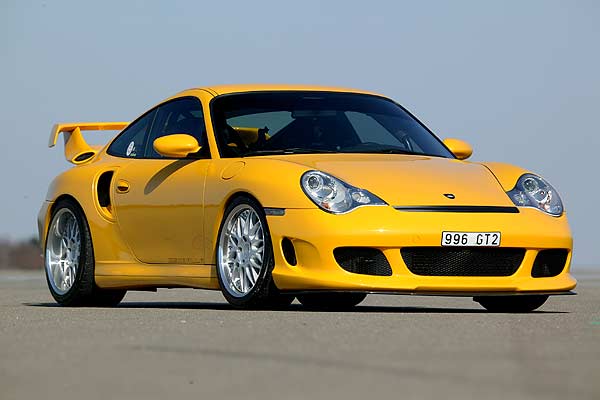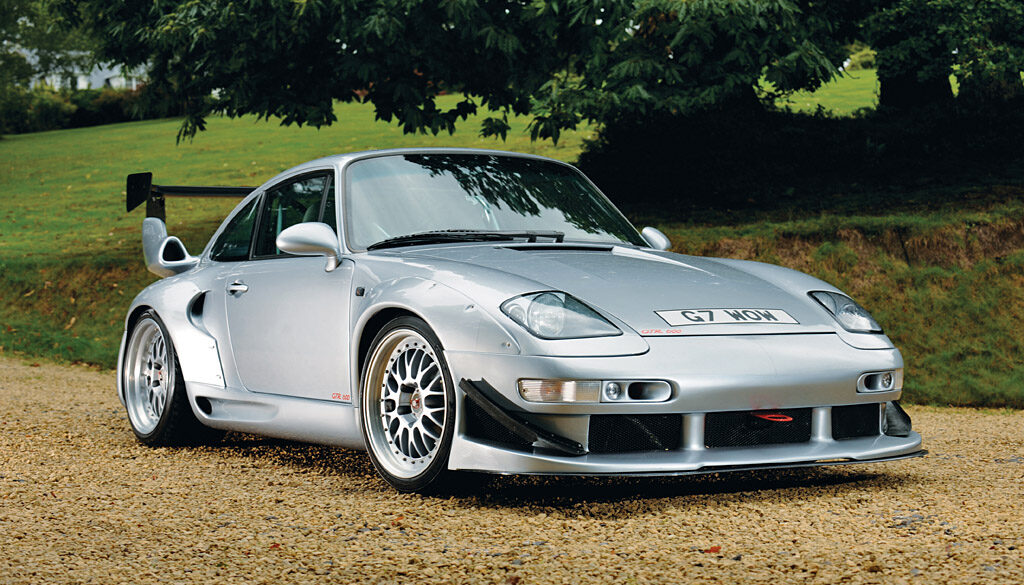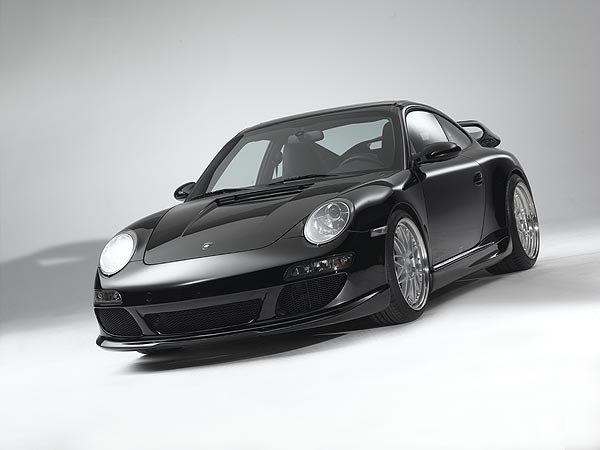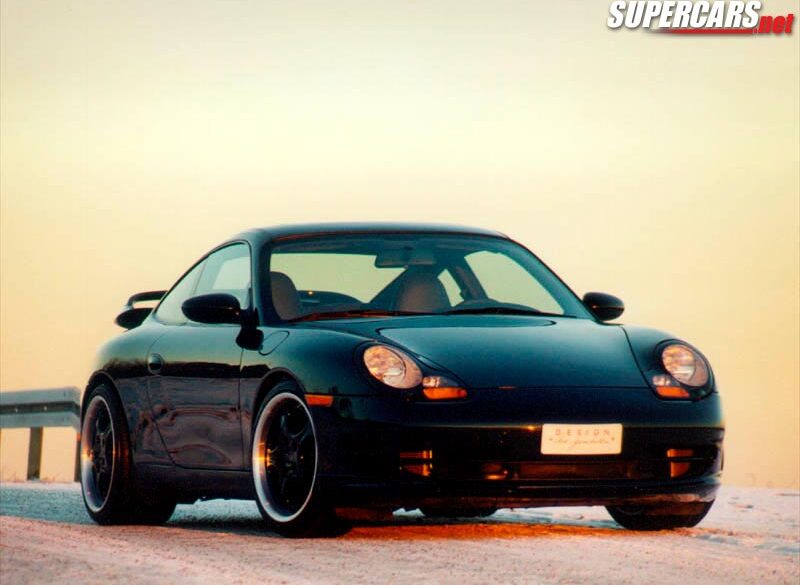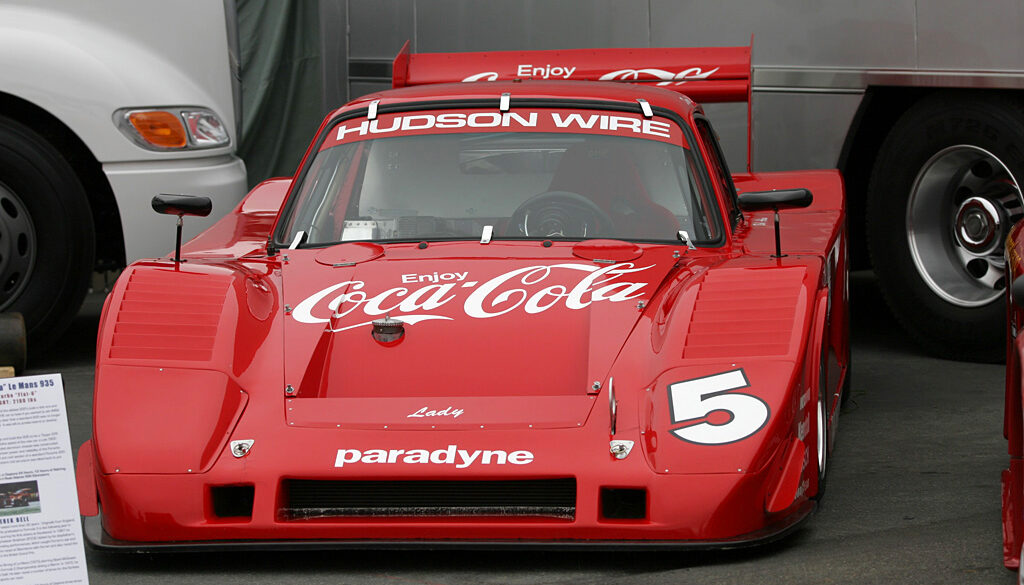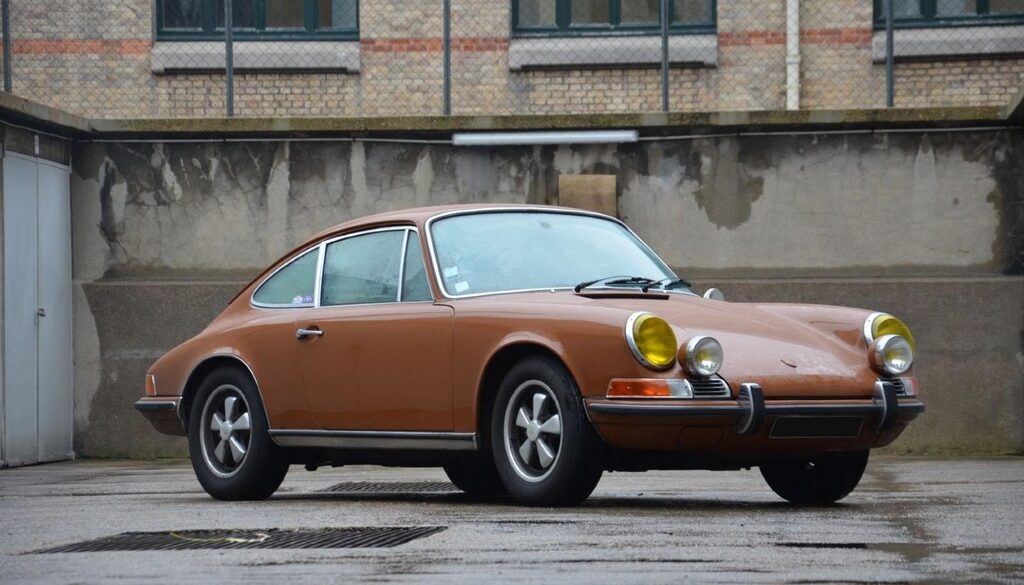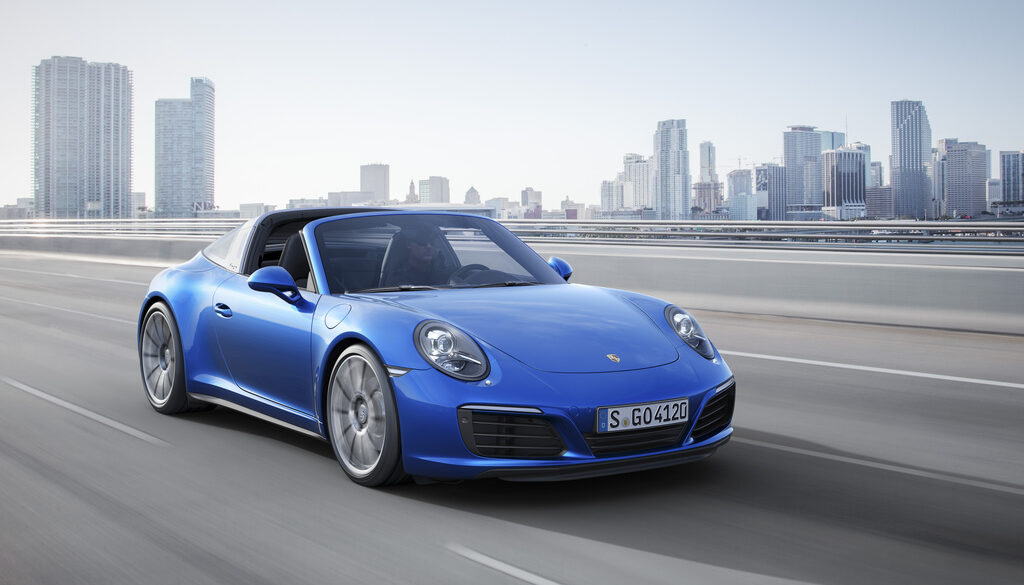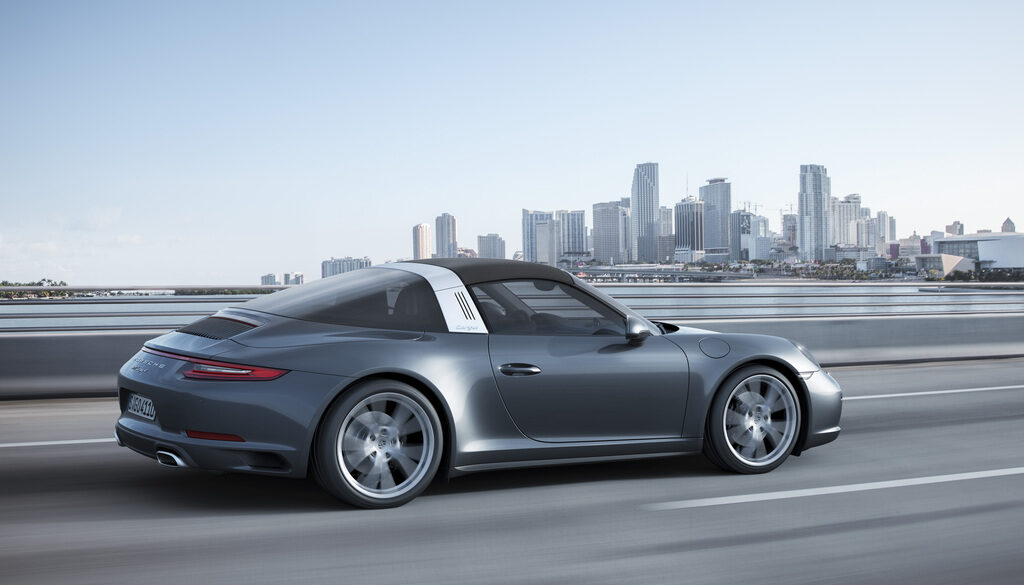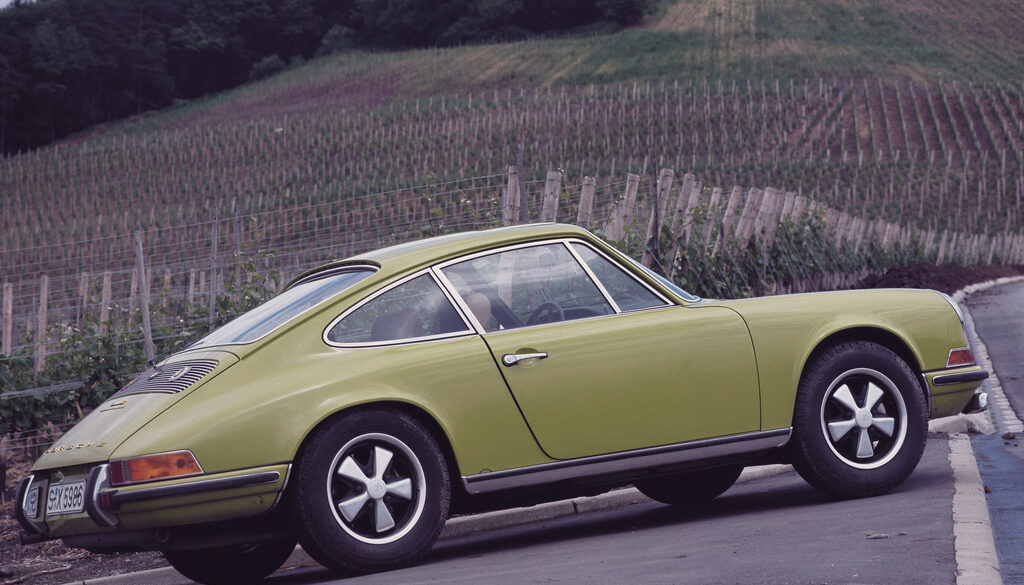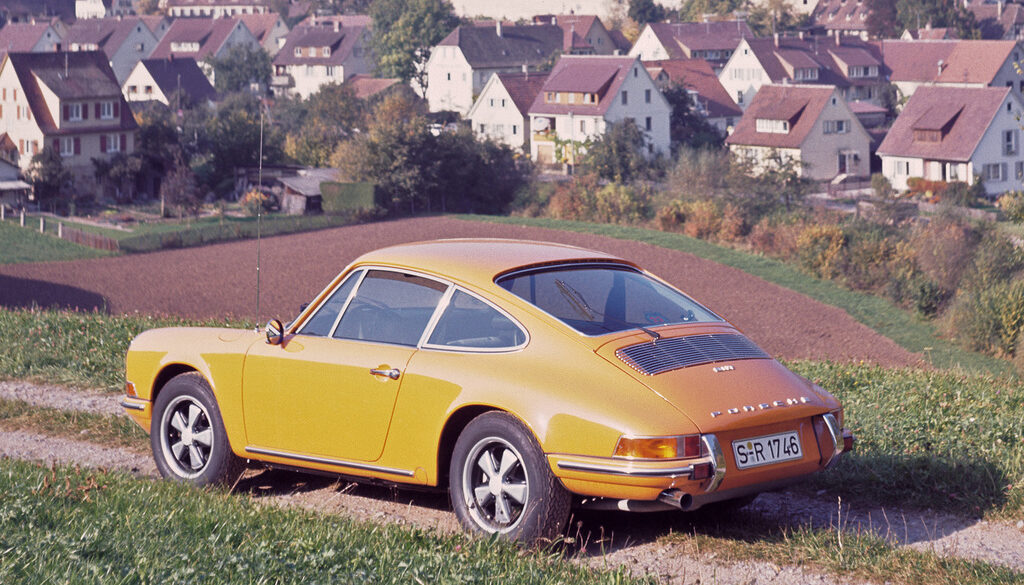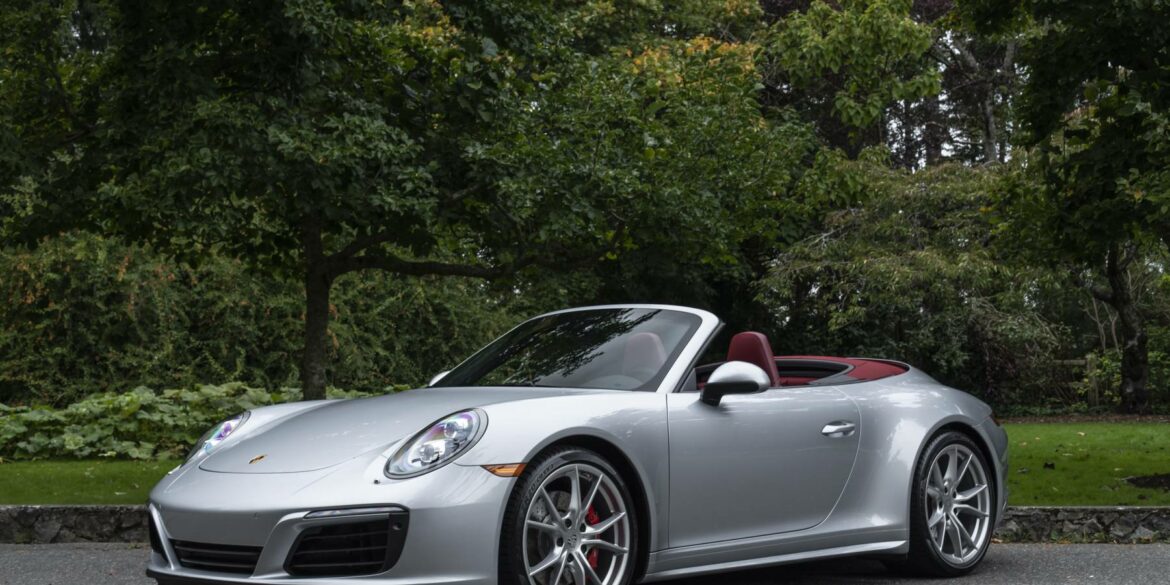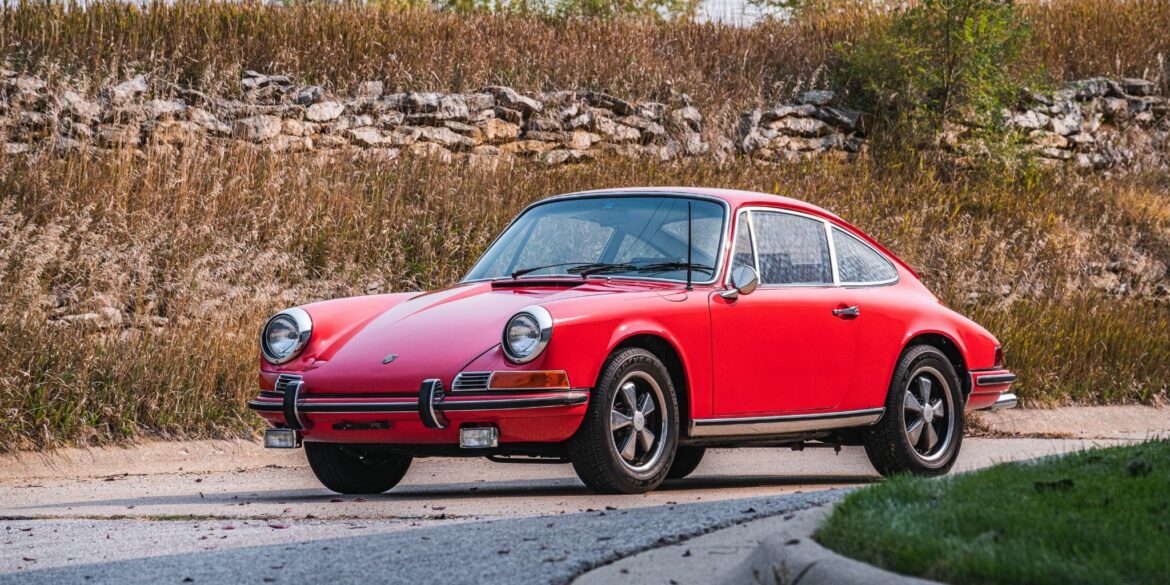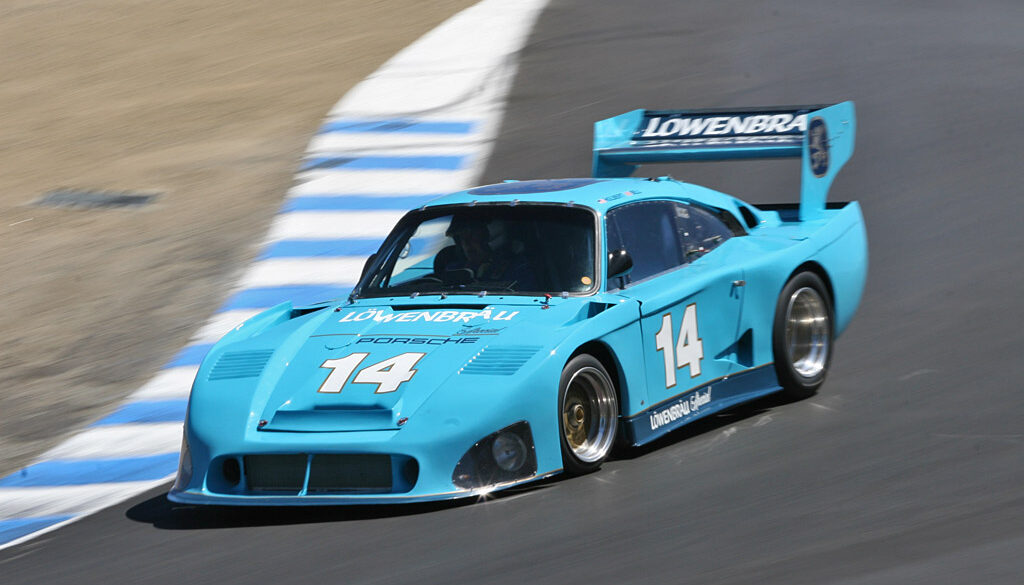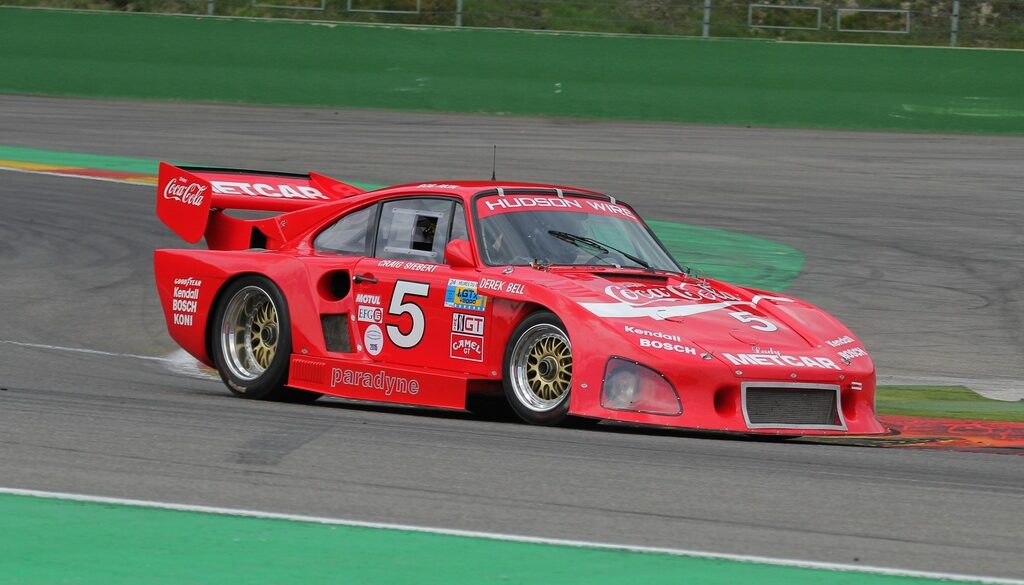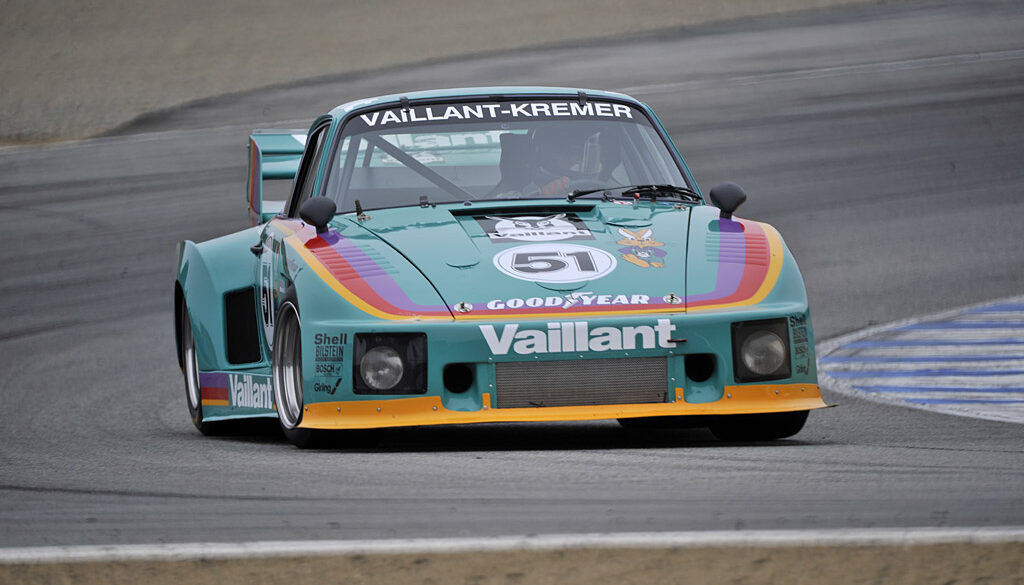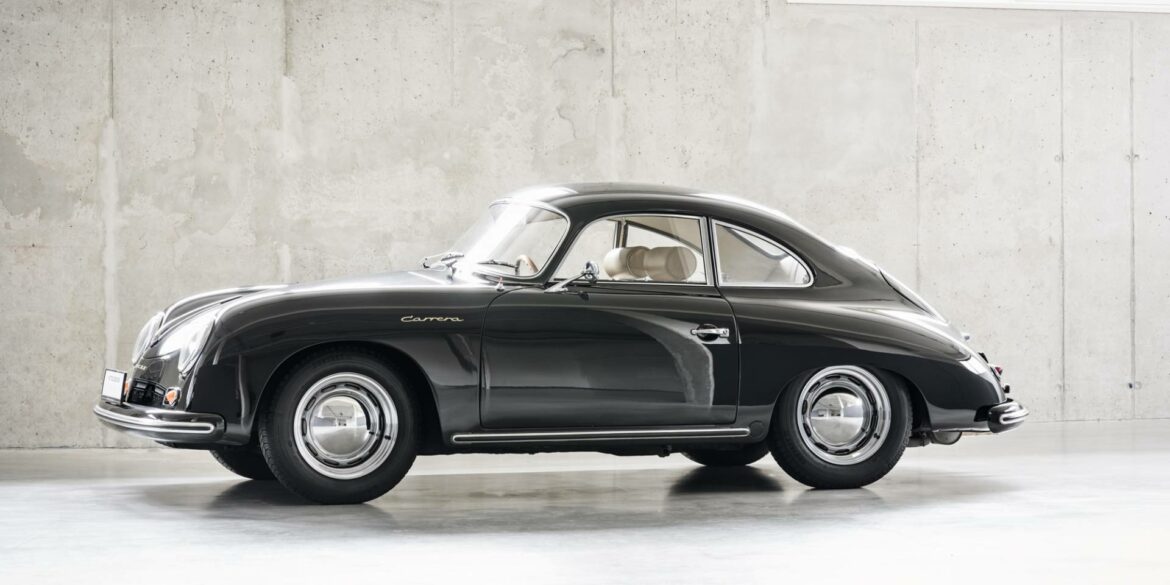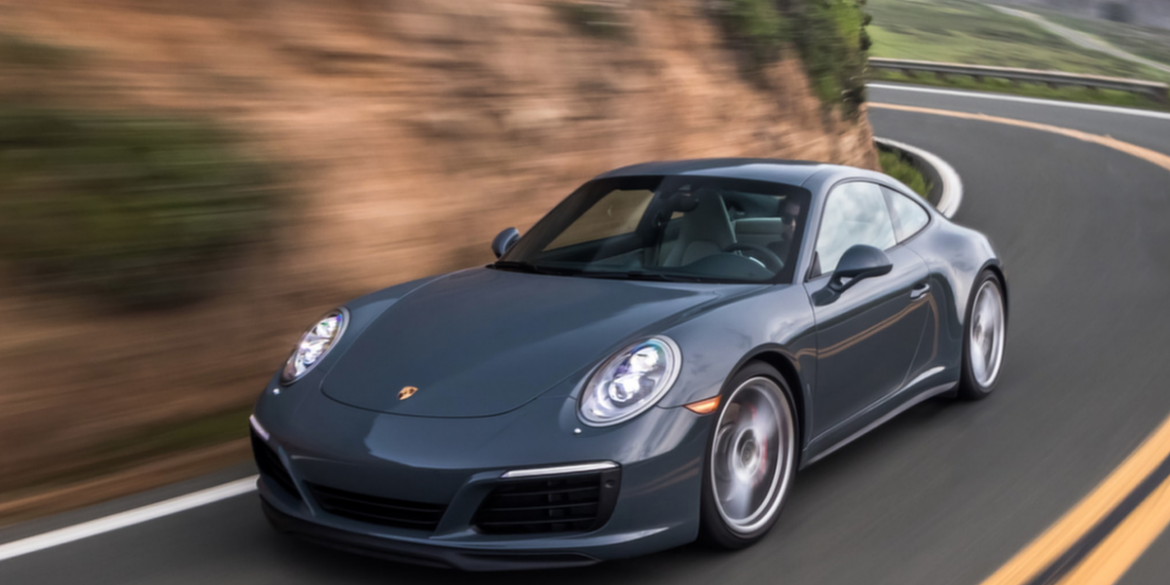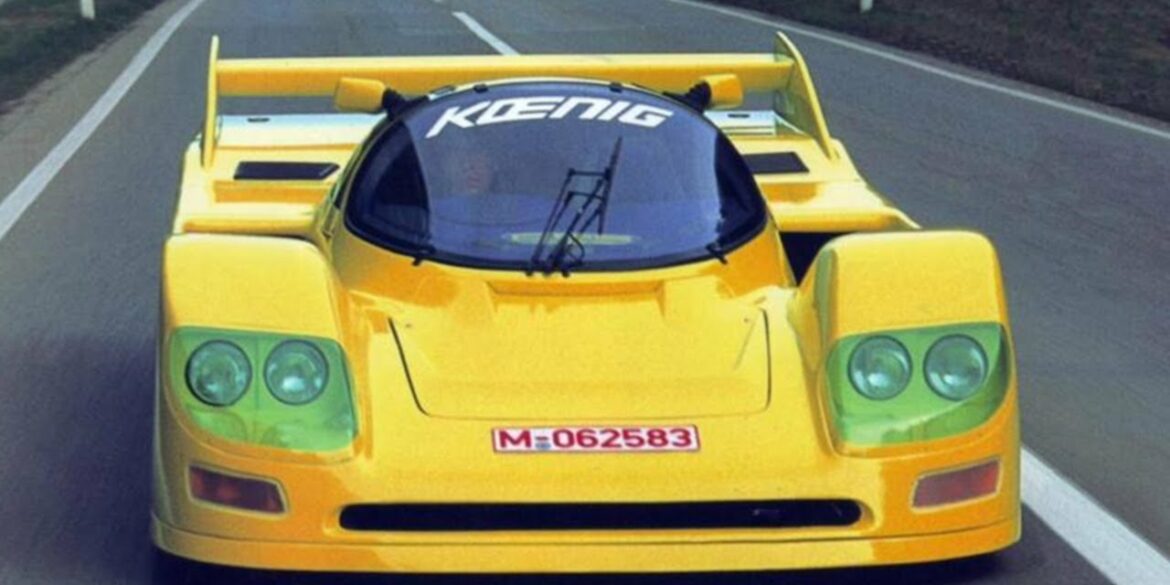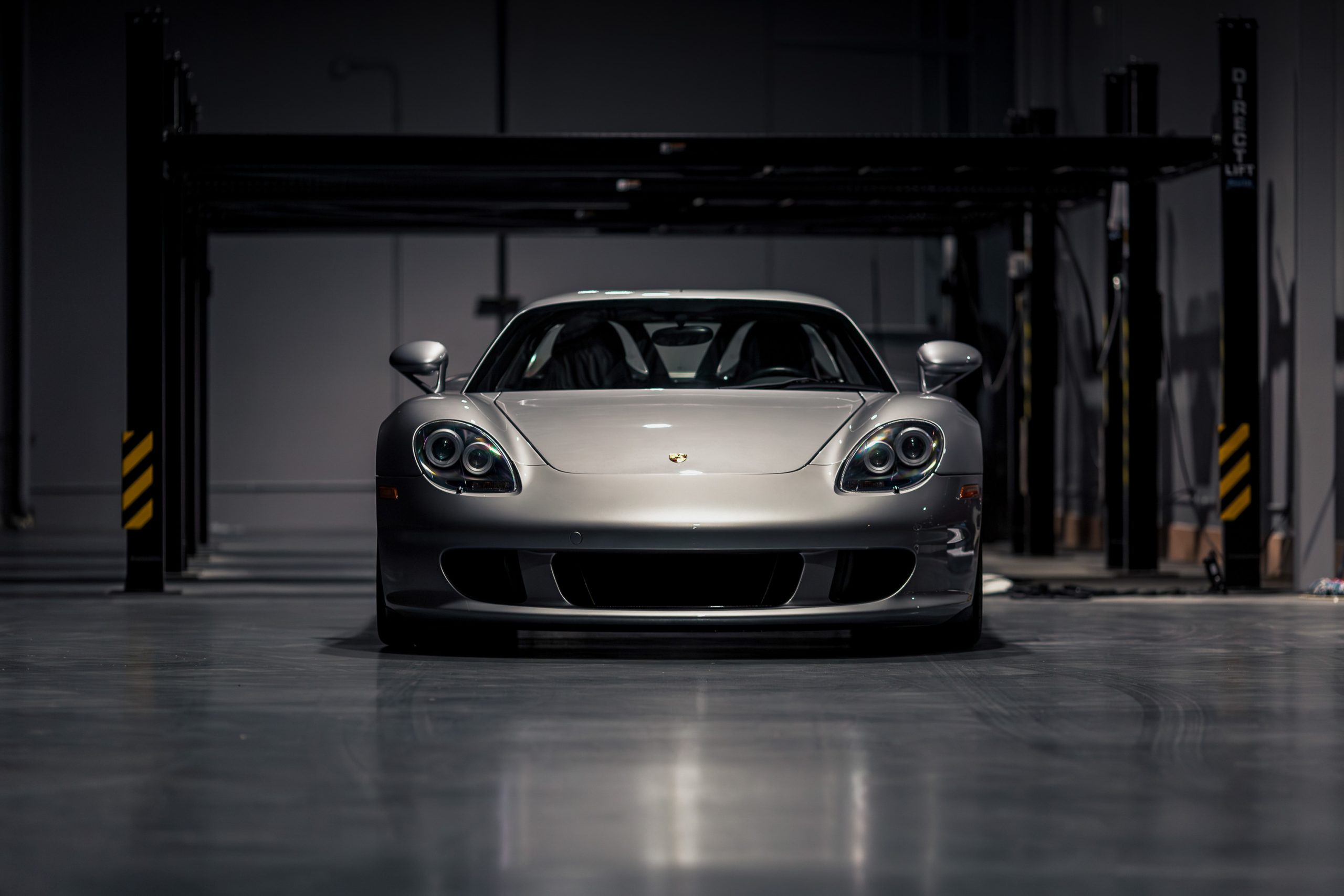1987 Porsche 911 Turbo ‘Flachbau’ In 1986 Porsche finally offered the slantnose, called Flachbau in German, straight from the factory. The official designation in the UK was Turbo SE and it is also sometimes referred to as the flatnose. Offered as the ultimate 930 Turbo, the this model had an...
JoinedMay 4, 2021
Articles3,547
Comments2
I am an Aussie boy, born and raised in Sydney who has now been living in my adopted hometown of New York since 2004. I never say NO to beer or pizza and love my wife and our three little boys. I'm an obsessed car nutcase. I talk about cars all day long. I have been into Porsches, Ferraris and every other cool carmaker since as far back as I remember. Back in 2013 I partnered up with some friends to acquire and operate some of my favorite automotive sites on the planet and Stuttcars was one of those sites. I hope to be a great steward of the brand.
In 1974 Porsche offered a high performance fuel injected Carrera specifically for the European market. These were close to 2.7 RS specification and are often referred to as the 2.7 or Euro Carrera. In many regards, this car is similar to the 1973 2.7 RS in touring trim, with its 210bhp 911/83 engine, but the 2.7 Carrera is based on the updated G-series body and interior. Later Carreras that reach American shores used had reduced power and throttle response compared to Euro counterparts.
In 1974, Porsche's performance version of the 911 was simply known as the 911 Carrera. It had new bumpers that complied to American regulations and the 2.7-liter engine from the Carrera RS 2.7. Other new features for 1974 included new seats, a full-width rear taillight. The Carrera deleted all the chrome off the car in favor of black window frames, wipers, doorhandles, but chrome could be ordered as an option. In 1976 Porsche replaced the Carrera with a new 3.0 liter variant.
Production of the second generation 911 started in August 1973. The 1974 model year G-series derivative replaced the outgoing 1973 model year F-series. Visually, the new 911 was given a major facelift and all three production variants now came with fuel-injected 2.7-litre engines. The entry level 911 had 150bhp, the mid-range 911 S offered 175bhp and the flagship 911 Carrera came with 210bhp. Once again, customers were given the choice of either Coupe or Targa body styles.
1967 – 1969 Porsche 911 S Targa 2.0 (SWB & LWB) Pictures & Gallery...
1967 – 1969 Porsche 911 S Coupe 2.0 (SWB & LWB) Pictures & Gallery...
1961→1965 APAL Porsche For nearly five years, APAL LG manufactured a fiberglass version of Porsche Abarth 356B Carrera GTL in Belgium. For track and rally events, they outfitted the same design with a lighter body and Porsche mechanics for events like the local Liège-Sofia-Liège. At only 650 kg, the car...
Porsche 718 RSK Spyder Pictures Not only is the 718 RSK Spyder one of most successful sports racers of it’s era, winning at Le Mans, Sebring and the Targa Florio in Italy, but it is also one of the most gorgeous race car designs ever. As you can see in...
2003 TechArt GT Street S Maximum performance combined with optimum lightweight: TechArt Automobildesign offers one of the world’s most powerful street-legal sports car with the new TechArt GT street S based on the Porsche GT2. 646 hp (475 kW), 0 to 300 km/h in 22.9 seconds only and a maximum...
2013 TechArt GrandGT TECHART Automobildesign presents its interpretation of the new Porsche Panamera models from September 12 to 22 2013 at 65th Frankfurt International Motor Show for the first time ever. The TECHART GrandGT based on Porsche Panamera Turbo extracts the purest TECHART DNA from Porsche’s premium limousine. TECHART Carbon...
2010 TechArt GrandGT Based on the Porsche Panamera, the TECHART GrandGT combines all of the features, for which TECHART is known, into one program – exceptional sportiness in combination with unique comfort. The masculine and extravagant level of the Panamera individualization will celebrate its world premiere at the Auto Zurich...
2005 TechArt Cayman S The sports outfit for the Porsche Cayman: TechArt Automobildesign introduces an elegantly styled and aerodynamically efficient bodystyling program for the new coupe at the ESSEN-MOTOR-SHOW 2005. The TechArt front spoiler, which is mounted to the production bumper, lends the front of the two-seater a more dynamic...
2013 TechArt Cayman TECHART Automobildesign adds the TECHART Rear Spoiler II to its recently introduced aerodynamic kit for the new Porsche Cayman models. The refinement specialist for Porsche models from Leonberg developed all parts under consideration of technical and aesthetic aspects to underline the mid-engine sports car’s mentality. For the...
2014 TechArt 911 Turbo S TECHART Automobildesign provides more power for the new Porsche 911 Turbo S. The TECHART Power Kit TA 091/T1.1 is based on the intelligent TECHART engine management system TECHTRONIC. By pushing a button the additional control unit delivers extra 60 hp and 130 Nm to the...
1996 TechArt 911 CT3 Karbon kevar doors reduced the overall weight of this car by 30 kilos. In Detail type Professionally Tuned Car built at Germany price $ $ 90000 engine Supercharged Flat-6 displacement 3600 cc / 219.7 in³ bore 100 mm / 3.94 in stroke 76.4 mm / 3.01...
2012 TechArt 911 Carrera Coupé An elegant appearance with a clear sporty design – simply unmistakable. Welcome to the premiere of the TECHART Program for the Porsche 911. The completely newly developed TECHART exterior design for the Carrera and Carrera S models will be officially presented as part of the...
2013 TechArt 911 Carrera 4 Coupé TECHART Automobildesign presents its individualization program for Porsche 911 Carrera 4 models. The valve-controlled TECHART Exhaust System Racing with central outflow, the TECHART Noselift System, carbon fibre interior styling packages in new attractive colours and illuminated TECHART door entry guards complete the TECHART Aerodynamic...
Not much is known about the Strosek 928 S4 Gullwing. All Strosek models were designed with body styling and aerodynamics in mind. As you can see from the images it is clearly the case for this 928.
1990 Strosek 911 Mega BiTurbo In Detail engine Twin Turbo Flat-6 displacement 3368 cc / 205.5 in³ power 380.3 kw / 510.0 bhp @ 6800 rpm specific output 151.43 bhp per litre bhp/weight bhp per tonne torque 540 nm / 398.3 ft lbs driven wheels Rear Engine / RWD f...
2001 Strosek 911 Cabriolet Much like all Strosek models, this car was designed with body styling and aerodynamics in mind. Stosek does provide an option to ‘RS tune’ the engine up to 343HP. In Detail submitted by Richard Owen engine Flat-6 valvetrain DOHC 4 Valves / Cyl displacement 3387 cc...
2005 Sportec SP600M Swiss Tuner Sportec, in co-operation with its project partners Toyo tires and Shell, not only blew away the 300 km mark for SUVs, but left the current world record of 282 km/h far behind by achieving a stunning 308.435 km/h. This world speed record with the Sportec...
The base model Porsche 911, along with the 2.7 Liter 911S and Carrera 2.7, was introduced for the 1974 model year with many significant changes to meet legislative requirements around the world for both impact safety and emissions. It was available in Coupe and Targa variants, sporting engine Type 911/92 with K-Jetronic fuel injection, rated at 150 hp. For the 1975, the base model was discontinued in North America. ROW got Coupe and Targa variants, featuring engine Type 911/41 rated at 150 hp.
2005 Sportec SP370 In Detail submitted by Richard Owen engine Flat-6 power 275.9 kw / 370 bhp @ 6250 rpm bhp/weight 258.56 bhp per tonne torque 420.3 nm / 310 ft lbs @ 4600 rpm f brake size mm / in r brake size mm / in curb weight 1431...
2012 RUF RXL The RXL was developed by RUF to satisfy drivers that the found the standard production Porsche Panamera lacking in interior space. The RXL front bumper is uniquely RUF creating an aggressive front profile. The light weight wheels are iconic five-spoke RUF and are 22 inches in diameter....
2012 RUF RT-35 Anniversary The Rt 35 Anniversary is based on the Porsche 991. Its Turbo power-train is offered only in rear wheel drive. The engine produces 630 hp and is available with the PDK transmission ensuring outstanding performance and driver comfort. The name is derived from RUF’s 35 year...
2010 RUF Roadster Alois Ruf and his team were inspired to build the RUF Roadster from a 1967 Porsche Targa. This 911 was equipped with an integrated roll cage which combines the safety of a Coupé with the fresh air feeling of a convertible. The centre piece of the roof...
2012 RUF RGT-8 The RGT 8, first introduced here at Geneva in 2010, is now available based on the new Porsche 991 platform. The RGT 8 features the “all RUF”, naturally aspirated V8 that produces 550 hp. The flexibility of the V8 engine delivers extraordinary performance and a sound track...
2014 RUF RCT RUF’s turbocharged cars have a proven track record, sustained over 37 years at the cutting edge of automotive technology and design. A milestone model in the RUF sequel is the RUF RCT, originally launched in 1994. The abbreviation “RCT” stands for “RUF Carrera Turbo”. The performance gains...
1998 Ruf Turbo R In Detail submitted by Richard Owen price $ $160 000 engine Twin Turbo Flat-6 valvetrain DOHC 2 Valves / Cyl displacement 3600 cc / 219.7 in³ compression 8.0:1 power 365.4 kw / 490 bhp @ 5500 rpm specific output 136.11 bhp per litre bhp/weight bhp per...
2000 Ruf RGT For those who missed purchasing a GT3, there is now a superior alternative – the RUF RGT with an elevated power output of 395 bhp. This normally aspirated power-plant performance is achieved through equipping the GT3 – based engine with a performance exhaust system, air filter and...
1987 Ruf CTR Yellow Bird The Ruf Yellow Bird is one of the most prolific tuned vehicles and gained notoriety from a Road & Track cover article which called it the ‘Fastest car in the world!’. It achieved this title during to two-day event in 1987, where Road & Track...
2012 Ruf CTR³ Clubsport The styling of the CTR 3 evokes the mid-engine Le Mans Coupes of the 1950s. The new Clubsport package further plays on the classic 1950s styling cues with the addition of Carbon-Fibre enhancements to the fenders, door sills, rear deck lid and the roof mounted air-duct....
1993 Ruf BTR 3.8 In Detail submitted by Richard Owen engine Turbocharged Inloine-6 displacement 3746 cc / 228.6 in³ bore 102 mm / 4.02 in stroke 76.4 mm / 3.01 in compression 8.5:1 power 309.5 kw / 415.0 bhp @ 6000 rpm specific output 110.78 bhp per litre bhp/weight bhp...
1987 Ruf 911 3.4 This race equiped gt3 was built intended for the track only. It is doubtfull we will see any of these on the road as they have already been completely sold to private teams. In Detail price $ $ 132 000 USD engine Turbo Flat 6 valvetrain...
2000 Ruf 3400 S In Detail submitted by Richard Owen price $ $96 000 USD engine Flat-6 valvetrain DOHC 4 Valves / Cyl displacement 3387 cc / 206.7 in³ bore 96 mm / 3.78 in stroke 78 mm / 3.07 in compression 11.3:1 power 231.2 kw / 310.0 bhp @...
1990 RS 911 Turbo In Detail submitted by Richard Owen price $ $207 058 engine Turbocharged Flat-6 valvetrain SOHC displacement 3368 cc / 205.5 in³ bore 98 mm / 3.86 in stroke 74.4 mm / 2.93 in power 432.5 kw / 580.0 bhp @ 6900 rpm specific output 172.21 bhp...
1900 Lohner-Porsche Hybrid Gallery...
1958 – 1959 Porsche 356A/1600GS Carrera GT Coupé Pictures & Gallery...
1958 – 1959 Porsche 356A/1600 Super GT Speedster Pictures & Gallery...
1952 Porsche 356 ‘America Roadster’ Pictures & Gallery...
1959 – 1963 Porsche 356B/1600 Cabriolet Pictures & Gallery...
1959 – 1963 Porsche 356B/1600 Coupe Pictures & Gallery...
1960 – 1961 Porsche 356B/1600 Super 90 GT Coupe Pictures & Gallery...
1959 – 1963 Porsche 356B/1600 Roadster Gallery Porsche 356 B 1600 Roadster (T5) – Pictures & Gallery Porsche 356 B 1600 Roadster (T6) – Pictures & Gallery...
1962 – 1963 Porsche 356B/2000GS Carrera 2 Pictures & Gallery...
1963 Porsche 356B/2000GS Carrera 2 GT Dreikantschaber Pictures & Gallery...
Dauer 962 Le Mans (1994) In the late nineties, bringing prototype racecars to urban roadways was an idea that several companies shared. Considering the contrast between sports car and race car engineering, embarking on such a project was a laborious task. Coupled with the limited production and tiny customer base,...
2002 Hamann 911 Gullwing Since September 2002, Hamann now also customize the current Porsche models as well as cars from BMW, Ferrari, Mini and Range Rover. But Hamann doesn’t only offer classical tuning for engine, bodywork, chassis and interior: Hamann gives the car wings in the true sense of the...
The Carrera S was the ultimate, naturally aspirated version of the Carrera 2. Porsche decided to offer something more to its customers when it launched the Carrera S version. It featured a stiffer and lowered suspension. Its wider tires made it better in the corners and faster around a race-track than its Carrera 2 sibling. The Carrera S took its bodywork from the Porsche Turbo. But it didn't get the turbocharger or the all-wheel-drive system. Its wider rear fenders and lowered stance than the Carrera lineup made it a desirable car for the Porsche fans. The engine was the same 3.6-liter naturally aspirated, but it was offered in the higher power output of 285 hp. The only transmission available was a 6-speed manual.
The Targa was the half-convertible bodywork offered by Porsche for the 911. By removing only a part of the roof and leave the closed-coupe rigid structure. It was offered a better sensation than a sunroof and it wasn't as heavy as a convertible. Unlike the previous Targa generation, the 993 featured a glass panel over the front passengers instead of a fabric one. The rest of the bodywork looked similar to the Carrera. The engine was a completely reworked flat-six, with a 3.6-liter displacement with the VarioCam system, which offered 285 hp. It was mated either with a 6-speed manual or a 4-speed automatic.
After introducing the Porsche Carrera S with the body carried-over from the Turbo version, customers asked about an all-wheel-drive version for it. The 993 Carrera 4S was sold between 1995 to 1998. Much like the 993 Carrera S, the 993 Carrera 4S takes the 993 Carrera 4 powertrain and fits it into the widebody 993 Turbo shell, sporting 18" alloy wheels. The engine was the same 3.6-liter naturally aspirated, but it was offered in the higher power output of 285 hp. As with the Carrera 4, it was only available with a 6-speed manual transmission. The 4S did not have a cabriolet version.
POV Tearing Up a Mountain in a 991 GT3 RS One of our favorite POV videos so far, this takes you behind the wheel in a GT3 RS screaming up a mountain. Turn up the volume because this one is special....
Porsche 959 Komfort (1987 – 1993) Pictures The Porsche 959 is a sports car manufactured by Porsche from 1986 to 1993, first as a Group B rally car and later as a legal production car designed to satisfy FIA homologation regulations requiring at least 200 street legal units be built....
1973 Porsche 911 Carrera RS 2.7 Touring Pictures & Gallery ...
Harry’s Garage 991.2 Carrera S Review The new 911 991.2 Carrera S is powered by a new twin-turbo 3.0 litre engine but is it actually better in the real world than the normally aspirated 911 it replaced? Let’s find out...
Does the turbocharged 911 move the game on enough? After a mammoth road test in issue 137, Total 911 decide which generation of 991 Carrera is better, the turbocharged Gen2 or naturally aspirated Gen1....
1956 – 1958 Porsche 356A/1600 Speedster Pictures & Gallery ...
Porsche 918 Pictures With the Rennsport Reunion taking place in Monterey this upcoming weekend, we thought it was prudent to show off the 918s we spotted there just a month ago. With the production run completely ended, the Porsche 918 was as abundant as it will ever be for the...
Porsche Museum The new Porsche-Museum will be opened on 31 January 2009. Enjoy a close-up experience of the history of Porsche. Encounter legendary racing and sports cars, fascinating production models as well as unusual prototypes. More than 80 vehicles will take you from the early years all the way to...
Inspired by the Kremer brothers, Joest built their own version of the 935 for the 1979 season. Like the factory cars it featured intakes in the C-pillars and also had a slightly different front profile. One car was campaigned by Liqui Moly Joest Racing and won the 1980 Daytona 24 Hours outright as driven by Reinhold Jöst, Rolf Stommelen and Volkert Merl. A second car was built up for Electrodyne and raced with Momo livery in the USA.
A Legendary Car “We’ve had Porsches in our family for decades…my father’s had a billion of them, I think,” says the owner. “But my very first memory [of this car], and my fondest one, is when I put the keys in the ignition and drove it out of my uncle’s...
2001 Porsche 996 Carrera – One Take This may be the best-bought 996 in history, for under $10,000. So how’s it drive?...
Porsche 911 Turbo S Review By Evo The Porsche 911 Turbo S boasts 572bhp and manages 0-62mph in 2.9 seconds. On paper, it looks to be the ultimate everyday supercar. evo’s Dan Prosser puts the facelifted 991.2 Turbo S through its paces at the Kyalami circuit in our review here....
After a considerable absence of a Carrera model in the 356 model lineup, Porsche finally made another version with the introduction of a 2.0-liter engine. As with the earlier versions, the Carrera was offered both in a Carrera GT Deluxe version for the road and the Carrera GT for racetrack duties. Unlike these earlier models, the new car benefited from the 2.0 liter engine introduced as the Carrera 2 in September 1962.
Carfection Reviews the New 991.2 Carrera S Porsche’s gone turbo on the 2016 911 Carrera S, so we thought it was best to have a look to see how much the iconic car has changed with a new, forced induced heart....
Porsche 997 Carrera 4S Review Continuing our theme of “Wait, are these really that cheap?” A well cared for Porsche 997 Carrera 4S can be had for an unbelievably low price these days, and this 2006 model is stunning with its Sport Classic look modifications and screeching wail of an...
In September of 1959 Porsche revealed their fully updated 356 known as the 356B. This had a completely revised body that was more suitable for the American market. New to the model was the Type 616/7 Super 90 engine which was an indirect replacement for the Carrera de Luxe models. The engine was fully revised with a new intake manifold, a larger Solex 40 PII-4 carburetor and the Carrera air filters.
In September of 1959 Porsche revealed their fully updated 356 known as the 356B. This had a completely revised body that was more suitable for the American market. The 1600 Super was also known as the 1600 S and that is what we are covering on this page. The 1600 Super sat in the middle of the lineup, below the Super 90 and above the base 1600. There were several variants with the base 1600 S engine, including the Coupe, Cabriolet, Notchback Coupe and Roadster, across both the T5 generation and T6 generation.
Porsche 911 (993) GT2 Driven Charles Morgan takes us through one of his favourite cars – the 911 993 GT2....
The 356 B T5 Coupe was the direct replacement of the Porsche 356 A Coupe. The T5 Coupe bodies were produced by German coachbuilder company Reutter. The 356 B T5 Coupe played a huge role in the growth seen by Porsche in the early 1960s. Like the Cabriolet, Roadster, and Notchback Coupe siblings, the Coupe was offered with 1600, 1600S, S90, and Carrera engine options paired to a four-speed synchromesh 741 transmission. In late 1961, Porsche introduced the T6 body and updates, which built on the success of its very popular predecessor.
One Take in a Tuned Porsche 996 Turbo X50 The Porsche 996 has sustained a long reputation for reliable speed, and with the recent spike in 80’s Porsche Turbo’s, it now has a new reputation: the cheapest Porsche Turbo you can buy. Nyx bought this one in San Diego the...
The final early 911S befitted from Porsche's 2.4-liter engine the the long-wheel-base body. As such it is one of the final classic 911s before the 2.7 came out in 1973. Visually, the 2.4 range received a new chin on the front valence that was standard on the 911S and optional for the rest of the range. The S model had slight larger 6Jx15 Fuchs alloy wheels over the other models. The final early 911S benefitted from Porsche's 2.4-liter engine the the long-wheel-base body
Of all the Carreras, the 1959 de Luxe was best suited for the road. Not only was it the most luxurious 356, but it was also was the only year to get the large 1600cc 4-cam engine. The Type 692/2 engine was a much different engine than the 1500cc unit it replaced. The newer unit used plain main bearings instead of roller bearings. Furthermore, the distributors were moved to the end of the crankshaft and the engine shroud was better attached to the 356A body. With twin Solex carburetors, the somewhat detuned version offered 105 bhp @ 6500 rpm.
The Porsche 911E continued as the midrange 911 model for 1972 and 1973, fitting between the contemporaneous 2.4L 911T and the 2.4L 911S. As with the T and S variants, Porsche would upgrade the 911E to a new, larger 2,341 cc (2.3 L) engine, commonly known as the "2.4 L" engines. The 911E version, designated 911/52 was rated at 165 hp (it was designated 911/62 with Sportomatic). With the power and torque increase, the 2.4-liter cars also got the newer and stronger transmission.
2009 Gemballa Mistrale Right at the market introduction of the Porsche Panamera, GEMBALLA Automobiltechnik GmbH & Co. KG for the first time publishes images of the GEMBALLA MISTRALE and presents fascinating features. The design of the GEMBALLA luxury limousine is even more dynamic, more striking and significantly more exclusive than...
The 911T Coupe and Targa continued as the entry level 911 for 1972 and 1973. As with the higher-end E and S variants, Porsche upgraded the 911T to a new, larger 2.3 L engine, commonly known as the "2.4 L" engine. With the power and torque increase, the 2.4-liter cars also got the newer and stronger transmission. Non-US versions (ROW), were carbureted and featured the Type 911/57 engine, rated at 130 hp. US-spec 911T's had engine Type 911/51 and were rated at 140 hp.
2002 Gemballa GTR 750 EVO Where Porsche stops, Gemballa takes off. As a long time tuner of Porsches, Uwe Gemballa is no stranger to the Flat-6 platform. His tuning takes Porsche performance from outstanding to extreme. The example of interest is a one-of car created for a customer in Dubai....
2012 Gemballa GT Coupé The legendary Porsche 911 spirit is alive and well in the new 991 Carrera. Even out of the box, the Carrera S PDK has such outstanding performance and driving dynamics, it is almost a match for the outgoing GT3. It certainly is the new class benchmark....
2012 Gemballa GT Cabriolet The new 991 Carrera Cabriolet is the latest “air-cooled” 911 to stir the Porsche driver’s emotions with its familiar flat-six soundtrack. Now, the new GEMBALLA GT appearance package compliments the al fresco experience by taking the Cabriolet’s eye appeal to the next level. The heart of...
2009 Gemballa Avalanche Roadster GTR 650 EVO-RS As unique car, the EVO-RS is Gemballa’s most potent looking roadster. Based off the Porsche Turbo, it uses Gemballa’s turbocharger, exhaust and intake to produce 650 bhp. The body gets an extreme makeover inclusing the rear wing usually reserved for the coupes. –...
1990 Gemballa 911 Mirage In Detail type Series Production Car price $ $ 375,000 engine Turbocharged Flat-6 valvetrain DOHC displacement 3367 cc / 205.5 in³ bore 98 mm / 3.86 in stroke 74.4 mm / 2.93 in compression 7.5:1 power 365.4 kw / 490.0 bhp @ 5900 rpm specific output...
1995 Gemballa 911 Le Mans Biturbo In Detail engine Twin Turbo Flat-6 displacement 3746 cc / 228.6 in³ bore 102 mm / 4.02 in stroke 76.4 mm / 3.01 in compression 8.5:1 power 410.1 kw / 549.9 bhp @ 5900 rpm specific output 146.8 bhp per litre bhp/weight 423.0 bhp...
2002 Gemballa 911 GTR 650 For 2002 it looks like Porsche tuner, Uwe Gemballa, has tweaked his ulitmate creation, the GTR 600. As the name would suggest, this 996 turbo based conversion pumps out 650 horsepower! The overall package is much the same as the GTR 600, with 380mm brakes,...
1996 Gemballa 911 GTR 600 At their London Motorcar Sale, RM Auctions sold this Gemballa Turbo. Their catalogues described the car as: “The Porsche presented here started life as a 993 Turbo, sent by its first owner to Gemballa for modifications totalling approximately £173,000. The resulting car is believed to...
2005 Gemballa 911 GT 3.8 Gemballa have recently released some details of their 997 tuning program. At first glace their GT 3.8 offers a subtle styling upgrade, one that we feel works well with the 997 design language and isn’t as garish as previous Gemballas. To achieve this look, Gemballa...
2001 Gemballa 911 GT In Detail = engine Flat-6 valvetrain DOHC 4 Valves / Cyl displacement 3387 cc / 206.7 in³ bore 96 mm / 3.78 in stroke 78 mm / 3.07 in compression 11.3:1 power 223.7 kw / 300 bhp @ 6800 rpm specific output 88.57 bhp per litre...
In 1982 Bob Akin Motor Racing commissioned spectacular Porsche 935 to be built for their Le Mans effort. It was built by Chuck Gaa of Gaaco to have a higher topspeed and increased performance. Chuck Gaa fitted a Lola T600 front end to a new bespoke bonded aluminum chassis. According to the regulations, the body retained the 930 roof structure, but was entirely new from the beltline down. The standard 3.2-liter Porsche engine was used and put out 750 bhp.
Along with all the C-series improvements to the 911 line, the 1970 Porsche 911 S was upgraded to include a 180 bhp version flat-6. This further improved the performance credentials of the model which already had Fuchs light alloy wheels and bigger brakes. Specific to the S model's engine was a re-profiled camshaft, larger valves, better porting, higher compression and larger jets for the Weber carburetors. This resulted in 30 more horsepower for a total 180 horsepower.
The 991.2 911 Targa 4S is powered by the latest water-cooled 3.0-liter twin-turbocharged flat-six from Porsche, producing 420 hp and 368 lb-ft of torque. It can be optioned with a PDK seven-speed dual-clutch automatic (a seven-speed manual is standard) and all-wheel drive is standard. Whereas the two earlier generations of Targas were little more than 911 Carreras with large glass sunroofs, the 991-series Targa nailed the look and feel of the original.
The 991.2 Targa did get some mild design changes, but they are all inline with the rest of the 991.2 changes. Despite the mild styling revisions, it’s a dramatically different car in terms of its engine. The iconic and highly regarded naturally aspirated 3.4-litre flat-six engine has been ousted for a more environmentally friendly twin-turbocharged 3.0-litre. It keeps its all-wheel drive system and is still an all-weather 911. A sports car with all-wheel drive is the first choice for more than one in three Porsche 911 buyers. It is sporty and comfortable, the turbo engines more powerful and consume less, with the improved all-wheel drive.
The Porsche 911E continued as the midrange 911 for the 1970 and 1971 model years, fitting between the contemporaneous 2.2L 911T and the 2.2L 911S. It produced 155 bhp and featured all the upgrades that came with C-Series production including longer wheelbase, Fuchs alloy wheels. Both the E and S model 911 had an aluminium engine-lid and aluminium bumpers. The 911 E 2.2 was once again available as either a Coupe or Targa body. For model year 1972, the 2.2L 911E was replaced by the 2.4L 911E.
The Porsche 911T continued as the entry level 911 for the 1970 and 1971 model years, sitting below the 2.2L 911 E and the 2.2 L 911 S. The 911 T featured all the upgrades that came with C-Series production updates including longer wheelbase and Fuchs alloy wheels. During its production years it was available as both a Coupe or Targa bodystyle. As with the E and S variants, Porsche would upgrade the 911T to a larger 2.2 liter engine.
A new turbo flat-six engine is the headline news. Still super fast and surefooted all year round. The revised four-wheel-drive 911 makes the car's appeal on year-round, any-occasion usability even stronger. The 911 Carrera 4S receives a series of subtle styling updates as part of a reasonably comprehensive mid-life facelift. Included is a redesigned front bumper sporting active air ducts that open and close to channel air to the front-mounted radiators dependent on throttle load, revised headlights with altered internal graphics, larger exterior mirror housings and new door handles.
The Porsche 911 E was designed to fall nicely between the 911 T touring model and the top of range high-performance 911S. The Porsche 911 T would continue for its second year in Europe, and newly introduced into the United States market, as the entry level offering for the 911, sitting below the 1969 911E and the 1969 911S. The 1969 911E was powered by engine Type 901/09 (Type 901/11 with Sportomatic) featuring mechanical fuel injection (MFI). The 2.0 L Aircooled Flat 6 was good for 140 bhp at 6500 rpm.
Using factory 935/78 ‘Moby Dick’ plans, Kremer built their own version. In doing so they modified the body to their own design to include more downforce. Only two cars were built in K4 specification. Bob Wollek drove the first car to win the Porsche Cup in 1981. Later this car was sold to John Fitzpatrick Racing and driven by John Fitzpatrick and David Hobbs to many successes in the IMSA series.
In 1977 Kremer sufficiently improved the 935 to begin series production of their own version. It was the third Kremer built on Porsche's successful platform and many 935/934s were updated to reflect ideas from the brothers in Cologne. The K3 version of their 935 was a great success and won the 1979 24 Hours of Le Mans, 1980 Sebring 12 Hours outright.
Upon seeing the factory 935s and what was possible using the 930 platform, the Kremer bothers from Cologne built up their own version. Their first car contested the World Championship of Makes in 1976 and in the following year, an updated version known as the K2 was further modified. Compared to the Porsche 935, the Kremer version was much more slab sided and featured fences along the top of the rear fender to direct air to the rear wing.
Available in all body styles, the Porsche 356 A Carrera featured the race car-derived 1500 cc four-cam engine (type 547) developed for the Porsche 550 Spyder. Rated up to 110 hp, it was the top performance 356 A model available. Variants included the Carrera 1500GS and Carrera 1500GT, differentiated by their horsepower. In 1958, Porsche updated the Carrera engines (now type 692), increasing the displacement up to 1600 cc and output increased to 105 and 110 hp respectively. In 1959 horsepower for the GT increased again to 115.
The new downsized flat-six gets forced induction, more power and greater efficiency, just like in the basic refreshed 911 Carrera, this time mated to a four-wheel-drive system nicked wholesale from the Turbo. Apparently one in three 911 buyers opt for a four-wheel-drive variant, so this is an important car to get right. The 3.0-liter twin-turbo flat-six in the 911 Carrera 4S is good for 414hp and 368 ft lbs of torque, helping it get from 0 to 62 mph in 4.2 sec with a manual, 4.0 seconds with the PDK and 3.6 sec with the PDK and optional Sport Chrono pack.
1991 Koenig-Specials C62 One of the more notorious tuners is Koenig Specials. As the focus of the company has been to offer body parts, and conversion-kits, Koenig has made some truly outrageous show cars. It is hard to decide which is their most radical, because among the top cars is...


